Green routes
We’re creating green spaces and enhancing biodiversity at 25 of our railway stations and five community areas located within one mile of a station.
The Green Routes project launched in May 2021. It’s supported by £100,000 in funding from the National Heritage Lottery Fund through its Local Places for Nature Scheme.
The scheme helps to take care of the unique and beautiful natural environments found near railway stations the length and breadth of Wales. It also supports the well-being of people who live in the communities we serve by allowing them to engage with nature as they travel to their destinations.
We know our communities take pride in looking after their green spaces. We’re working closely with local people, local delivery partners and our station adopters as we connect Wales together with Green Routes.
North Wales stations
Abergele railway station
- We’ve created a new green route through the station.
- We’ve built eight new planters with native pollinator-friendly plants using sustainable, peat-free soil and flowers suited to the coastal environment.
- Planting efforts were supported by British Transport Police officers and staff from Abergele Town Council.
- We’re looking at proposals to plant shrubs and wildflowers on the station access ramp and the grassland area on the platforms.
After
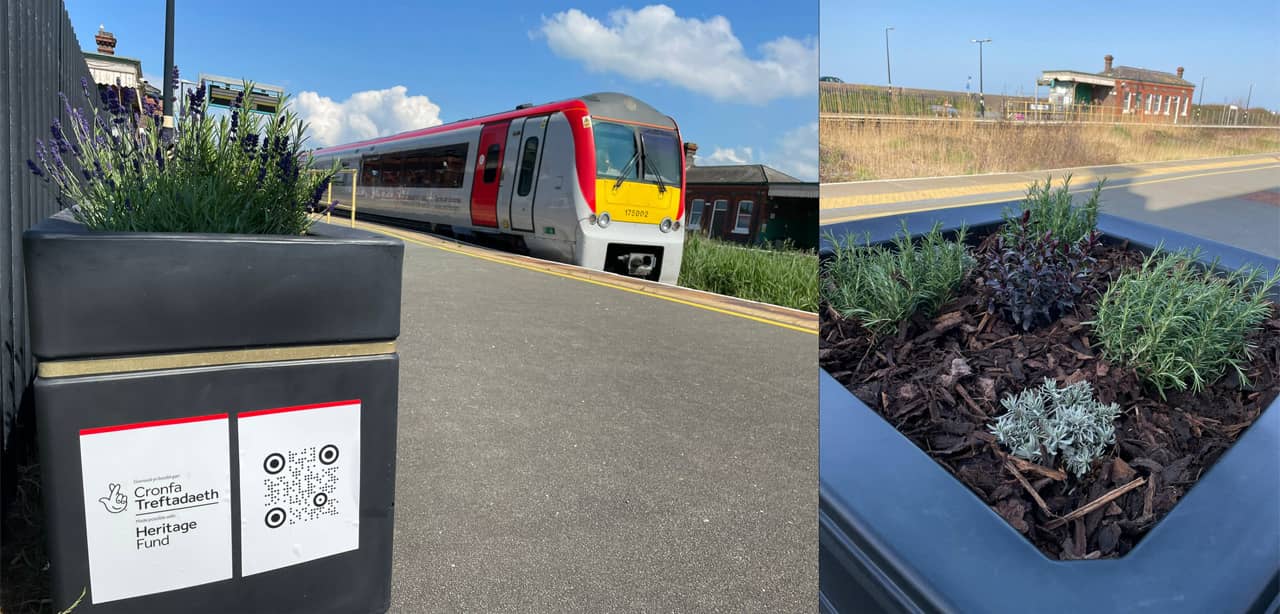
Bangor railway station
- Funding from the project has built nine pollinator-friendly planters at the station, creating a green route from the station entrance to the main platform.
- The planters have been adopted by the Friends of Bangor Station adopter group.
- We’re adding planters with native pollinator-friendly, sensory-enhancing plants and flowers species.
- The plants and flowers use sustainable, peat-free soil to improve the appearance of the station and support local biodiversity.
- We’ve supported Friends of Bangor Station with equipment and resources to continue their community-led enhancements.
After
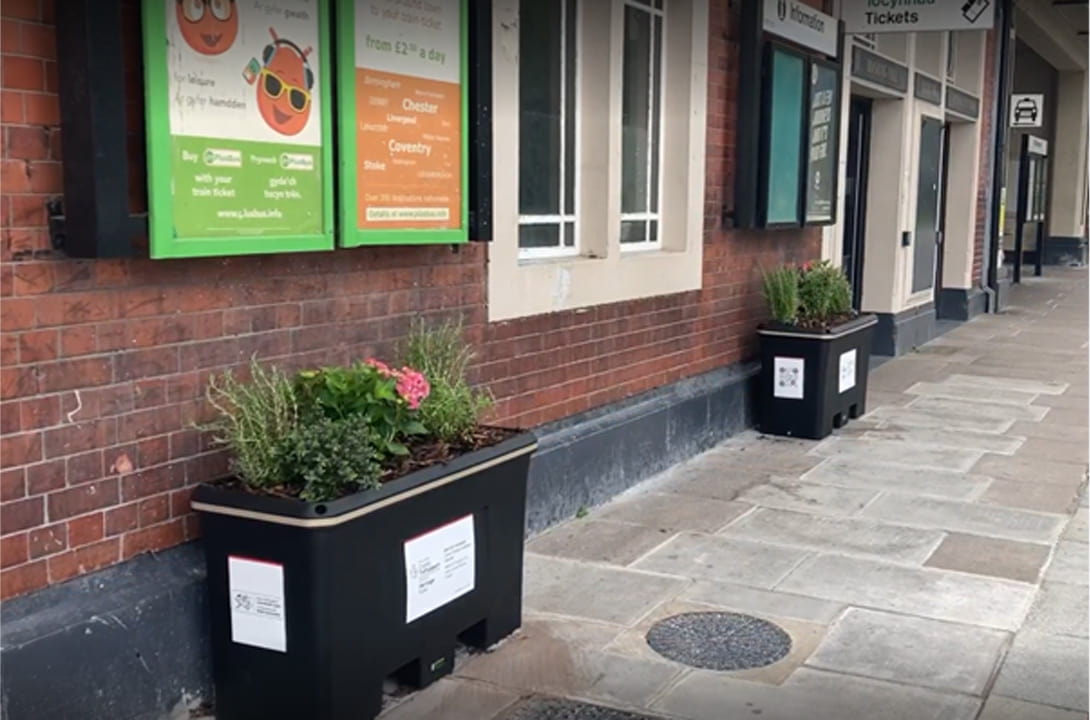
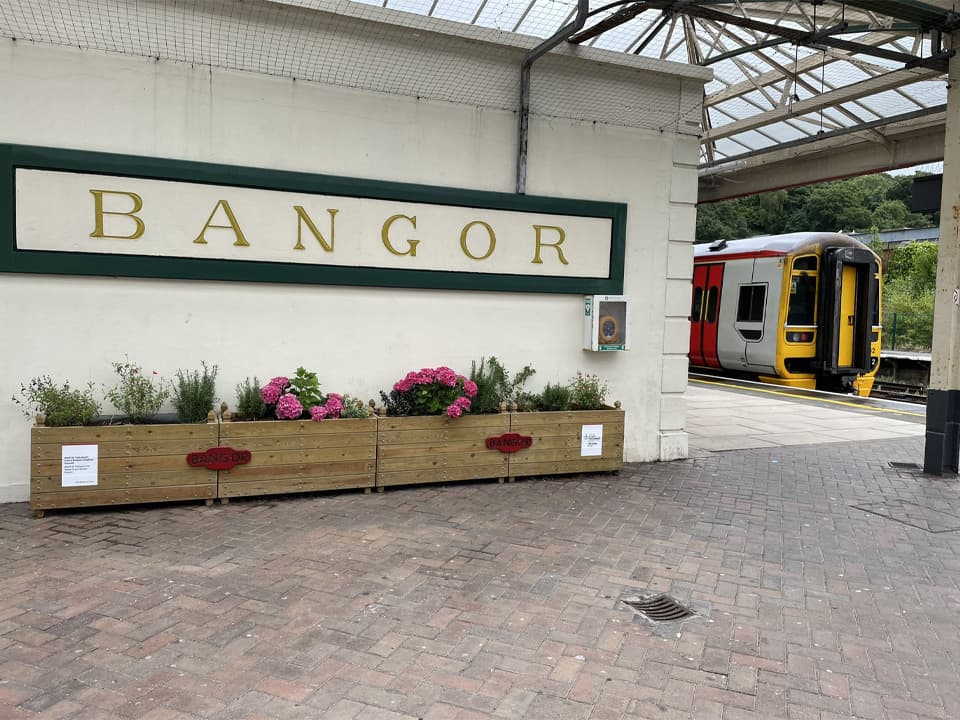
Conwy railway station
- Funding from the project has built four pollinator-friendly planters at the station which have been adopted by the veterans group Boots on the Ground.
- The planters have created green routes on both sides of the station, enhancing the experience for passengers.
- Pollinating insects have been spotted at the station within days of the planters being installed.
- British Transport Police officers the Counties Community Rail Partnership also took part in planting.
- We’re installing water butts to collect rainwater and support vegetation.
After
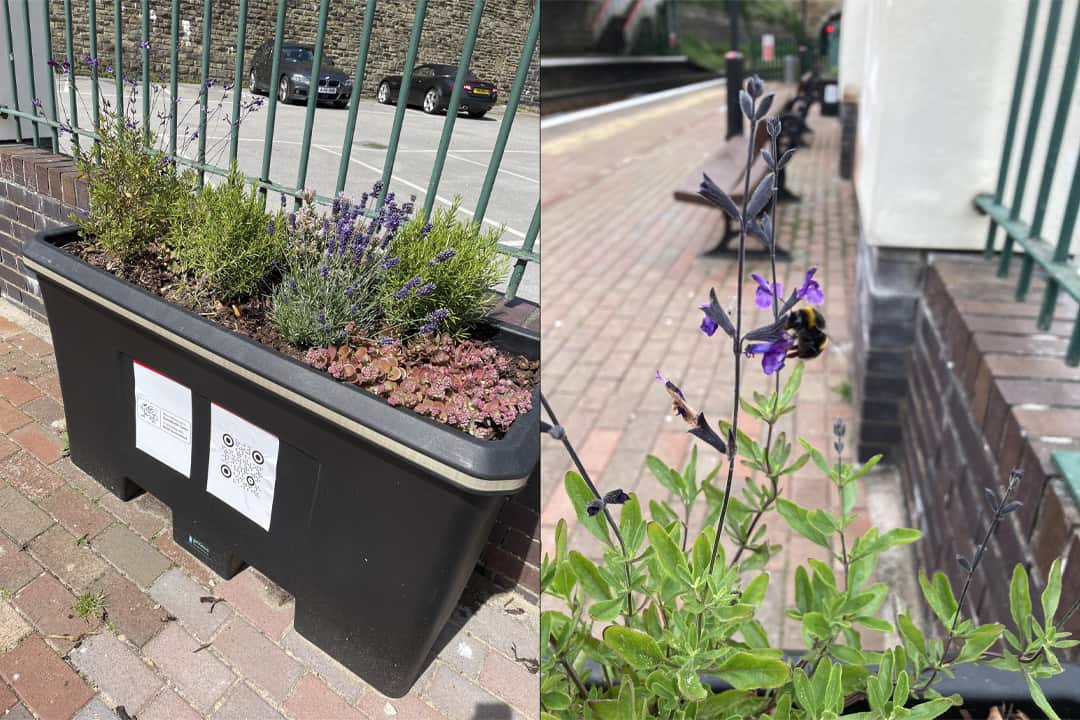
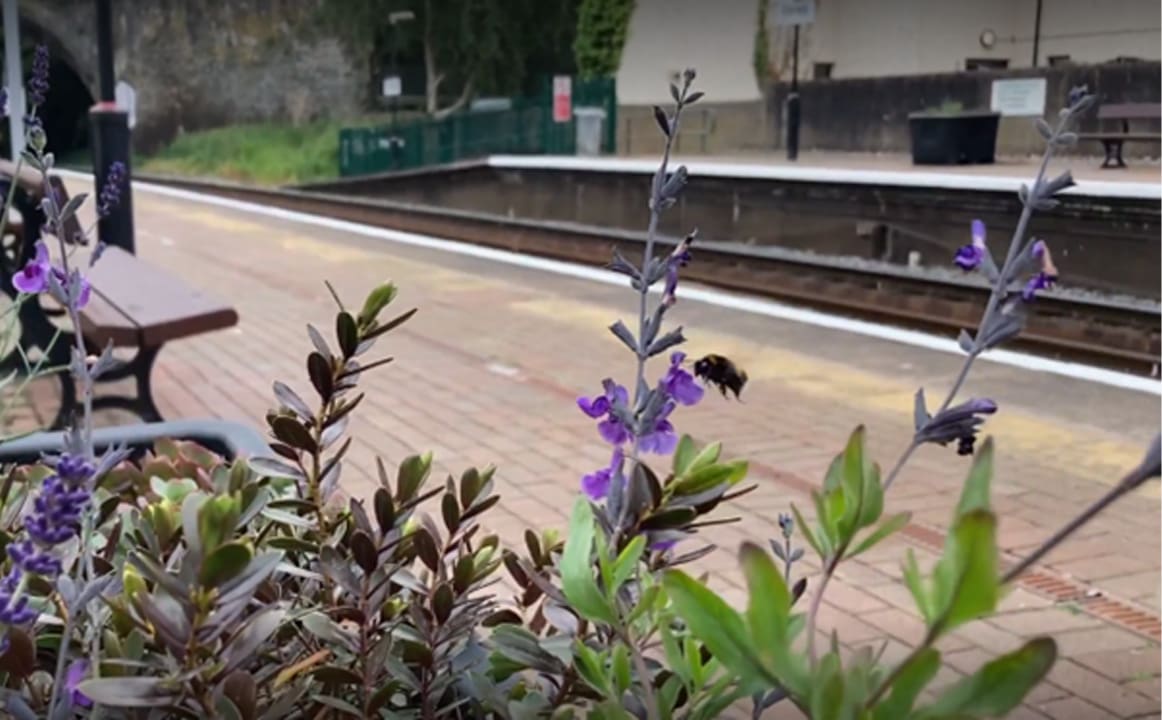
Glan Conwy railway station
- Funding from the project has built two pollinator-friendly planters at the station which have been adopted by residents.
- The planters are positioned to support existing plants and green features at the station.
- We’ve used native plants to help support local biodiversity.
Before
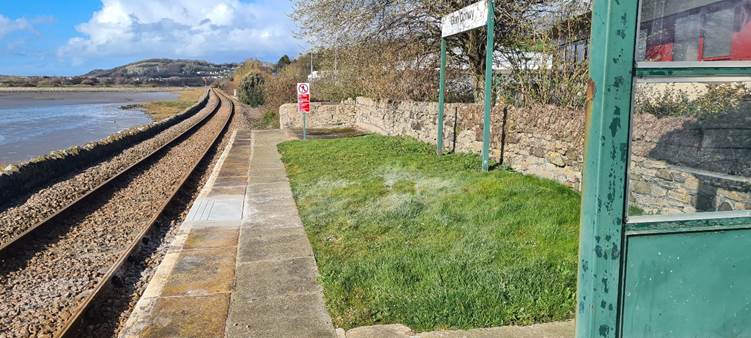
After
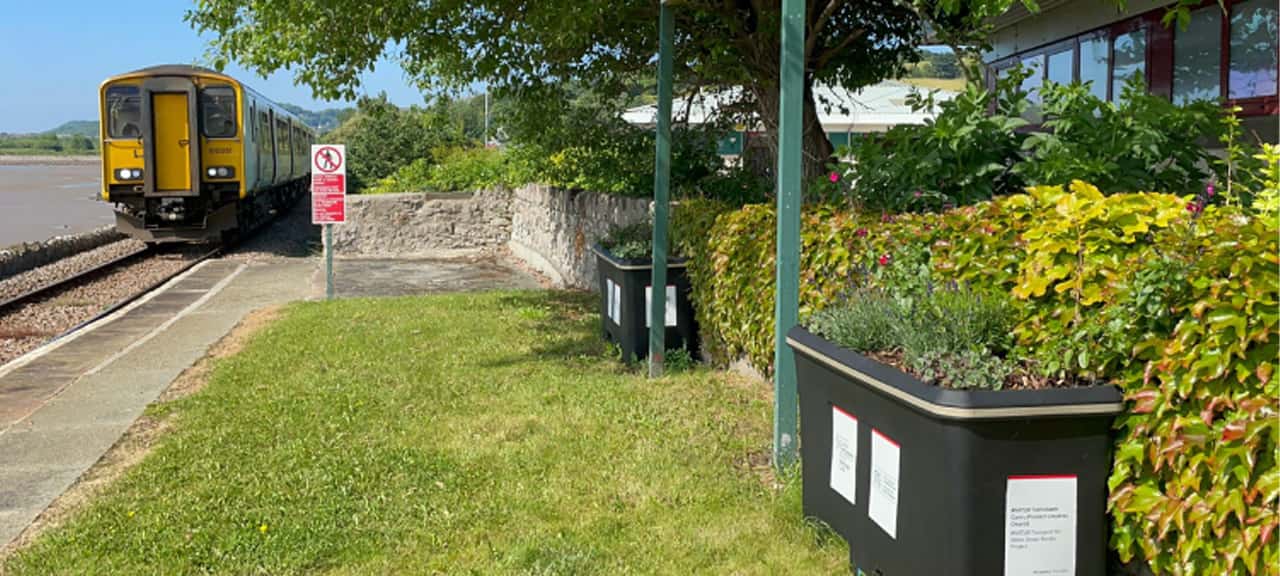
Llandudno Junction railway station
- Funding from the project has built six pollinator-friendly planters at the station which have been adopted by the Friends of Llandudno Junction Station.
- We worked with local veterans to place sustainable wooden planters at the station.
- The station has seen more visits by pollinating insects, helping support local biodiversity. An elephant hawk moth has even been spotted among the flowers.
Before
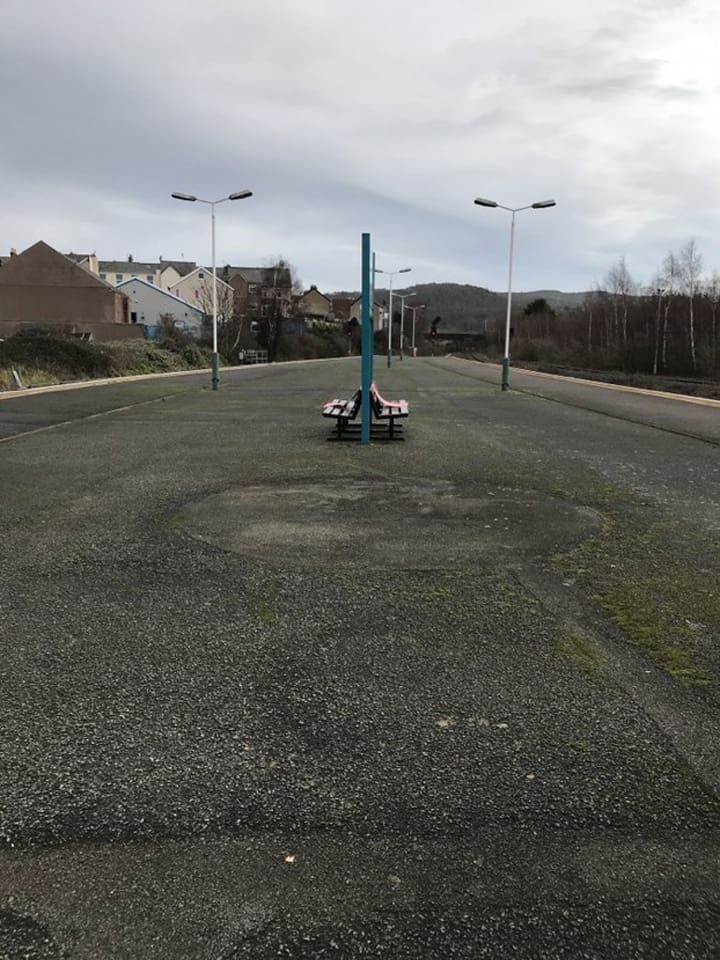
After
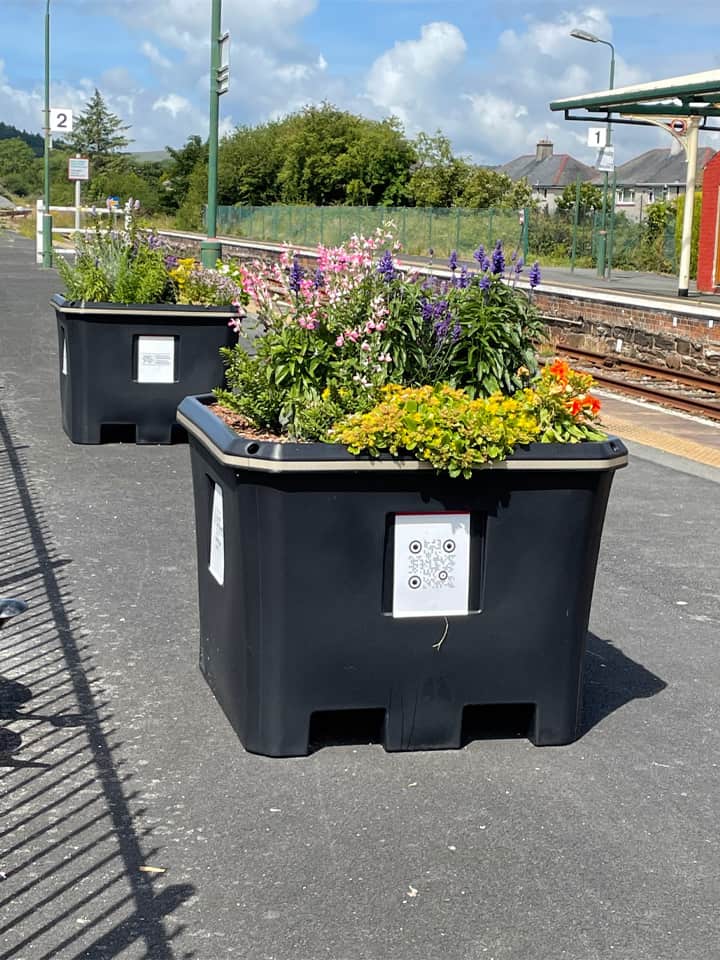
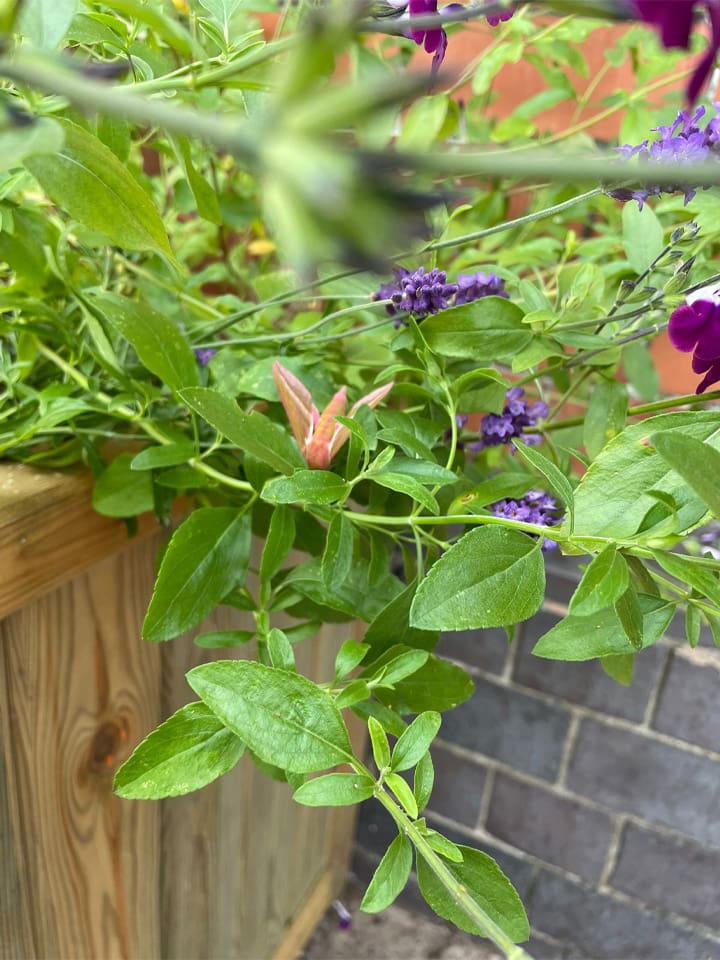
Porthmadog railway station
- Funding from the project has built seven pollinator-friendly planters at the station.
- The planters have been adopted by Incredible Edibles, a community group that champion sustainable living and biodiversity education.
- They have an eco-hub located near the station and actively work with the nearby school to deliver eco education programmes for children.
- Incredible Edibles are supporting us to continue making green improvements to Porthmadog railway station.
After
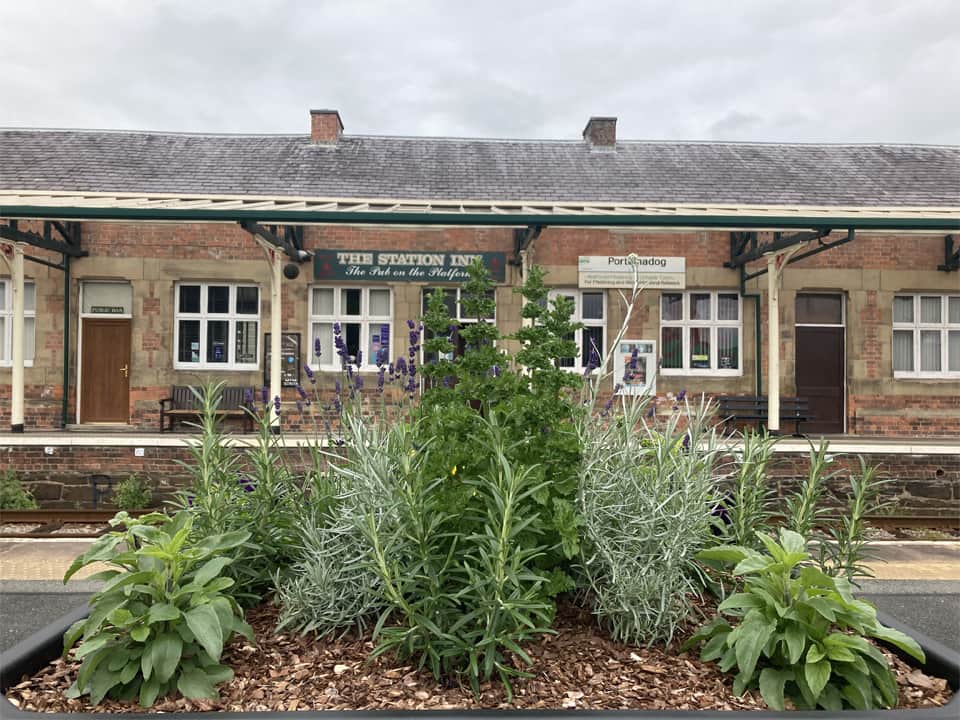
Rhyl railway station
- Funding from the project has enabled us to replant 26 pollinator-friendly planters at the station, creating a green route from the station entrance and along the platform.
- The planters have been adopted by the Friends of Rhyl Station adopter group.
After
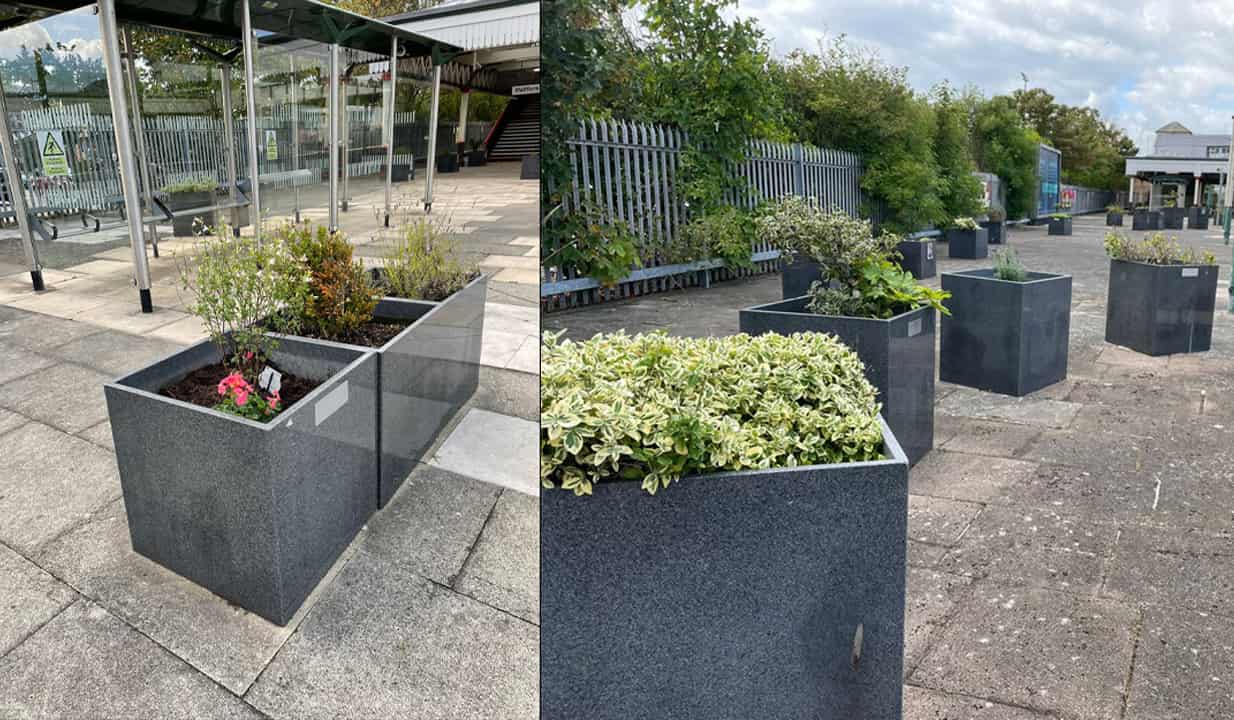
South Wales stations
Abergavenny railway station
- We’re adding more planters with native plants and flowers using sustainable, peat-free soil.
- We’re looking at proposals for plants and shelters for local wildlife in the station’s disused spaces.
Before
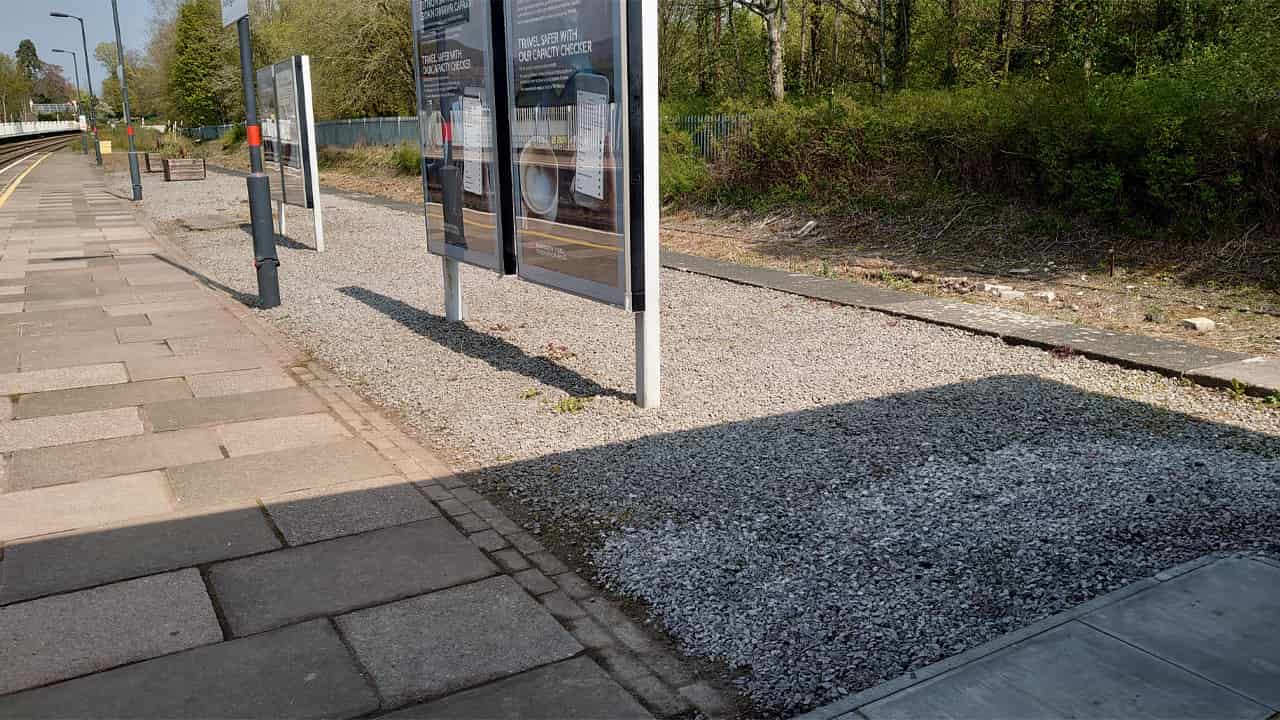
After
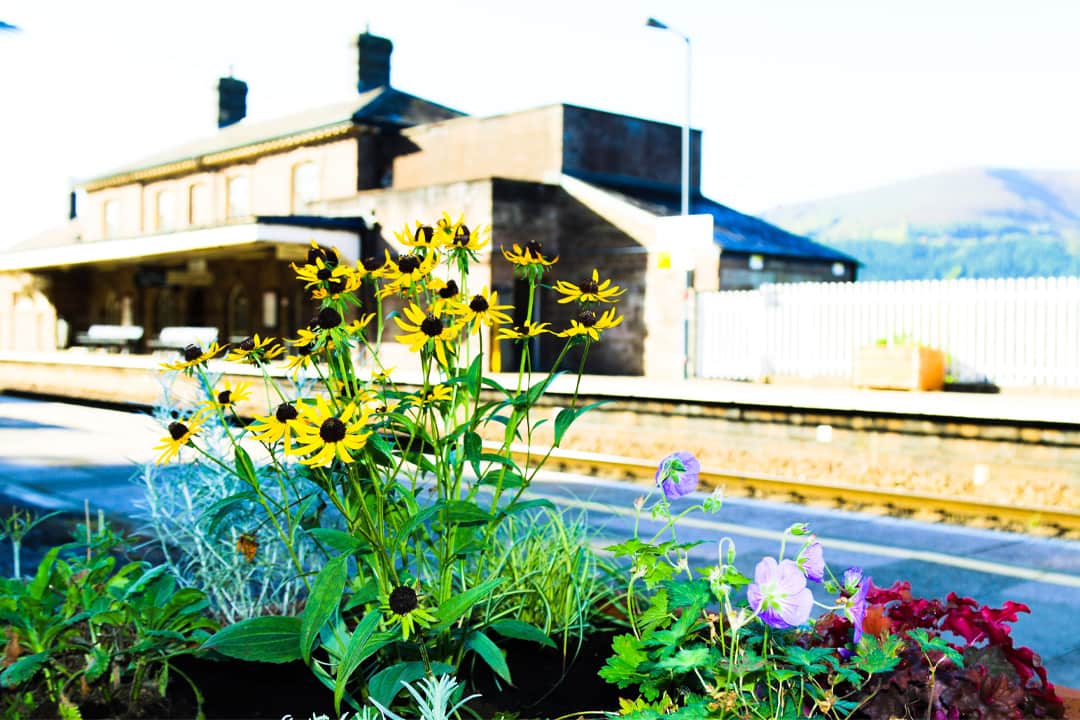
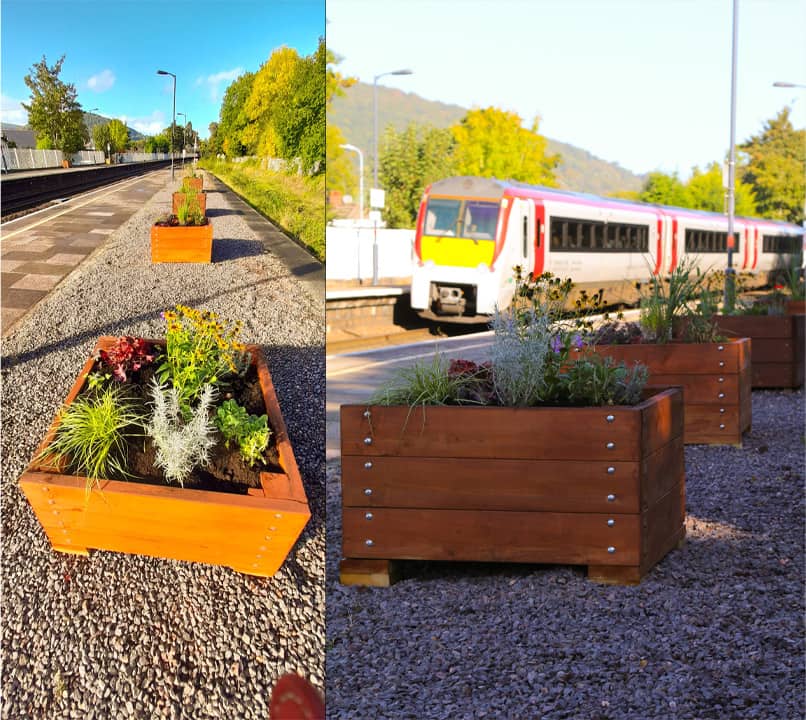
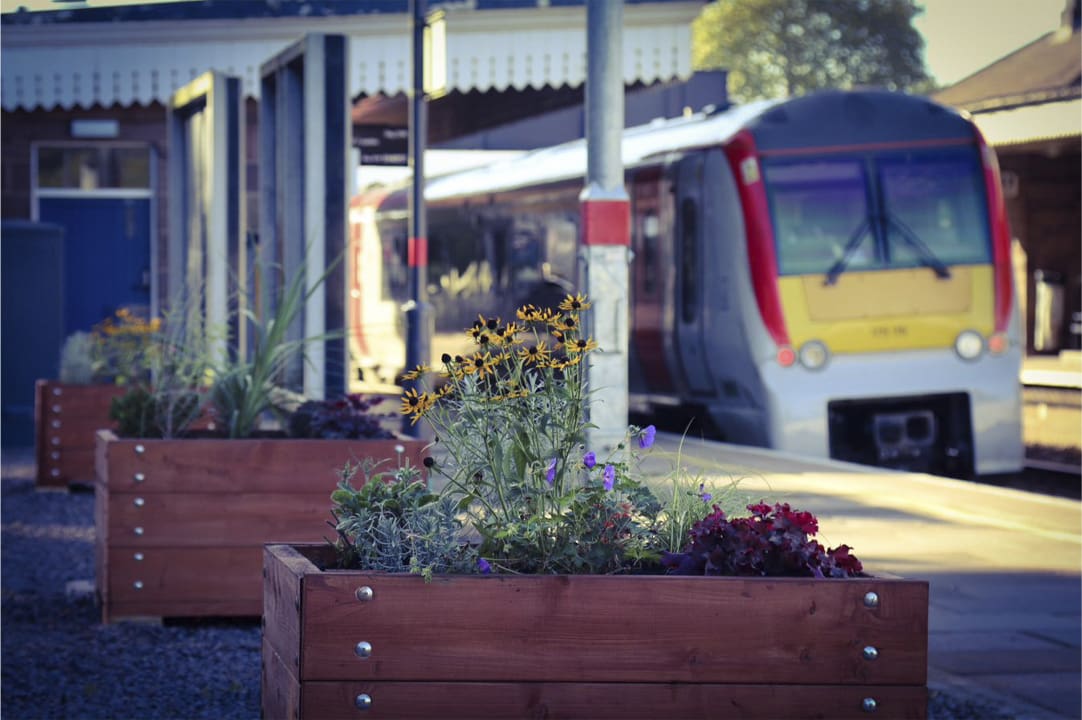
Barry railway station
- Funding from the project has enabled us to replant existing planters to improve pollination.
- The planters are being looked after by a small team of TfW station staff.
- We’re looking at ways we can adapt the station’s existing green spaces for plants and shelters for local wildlife.
After
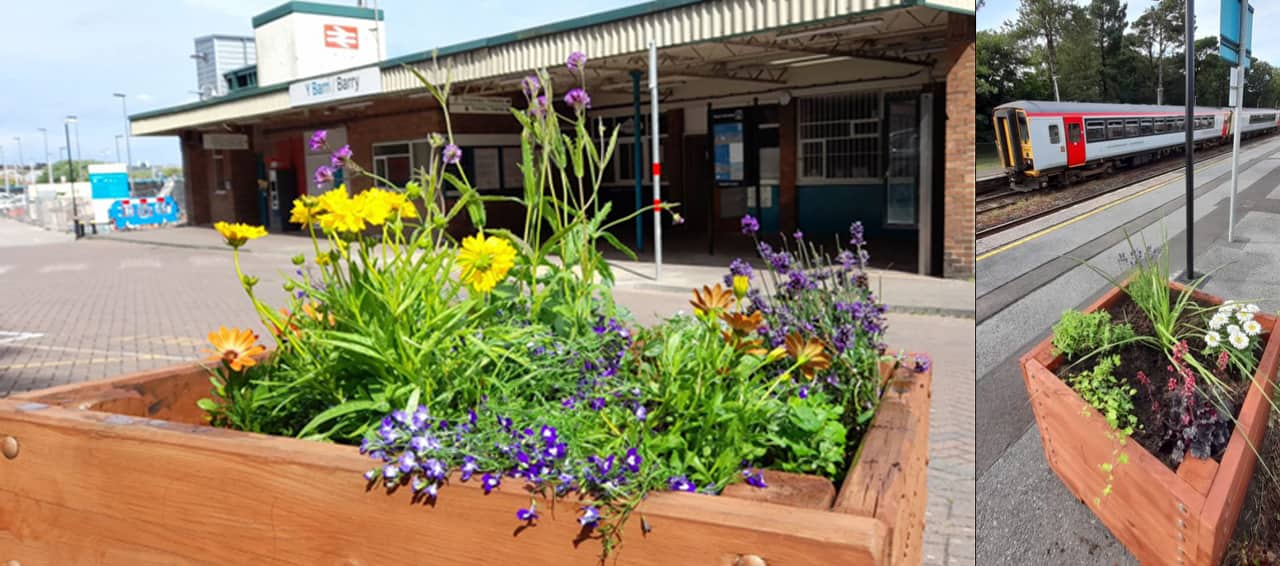
Caerphilly railway station
- We’ve added six new planters with a mixture of pollinator-friendly and sensory plants to create a Green Route from the high street to the station.
- We’ve used sustainable, peat-free soil.
- The station has been adopted by members of Caerphilly U3A and we’re working together to find ways we can improve the station’s green spaces and create shelters for local wildlife.
- The station and its adopters were also part of ‘Caerphilly in Bloom 2022’, with a Gold Award being achieved for their efforts.
After
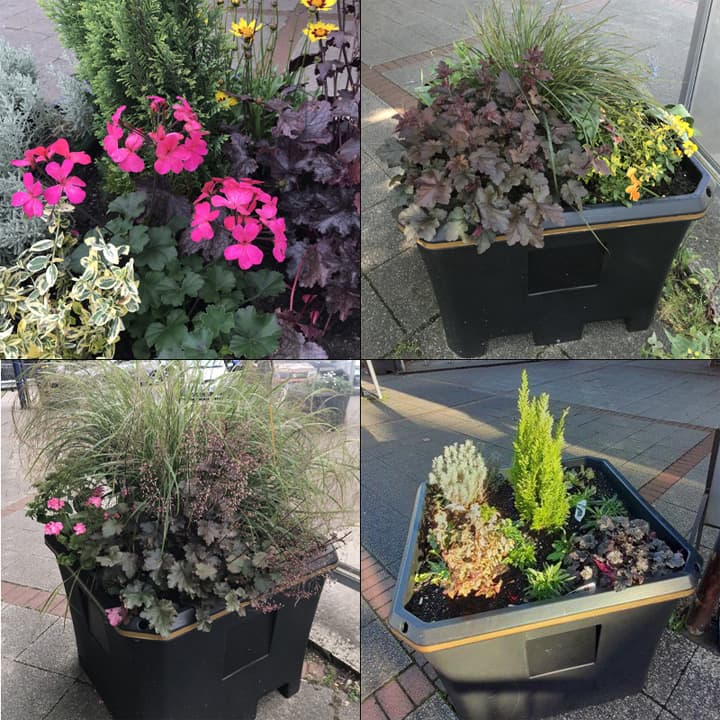
Cardiff Bay railway station
- We’ve enhanced the three existing areas in the station with pollinator-friendly and sensory-enhancing plants like lavender, borage and hebe’s.
- Cardiff Bay Rotary have adopted the station, and we’ll work together to continue station enhancement for the local community and wildlife.
Before
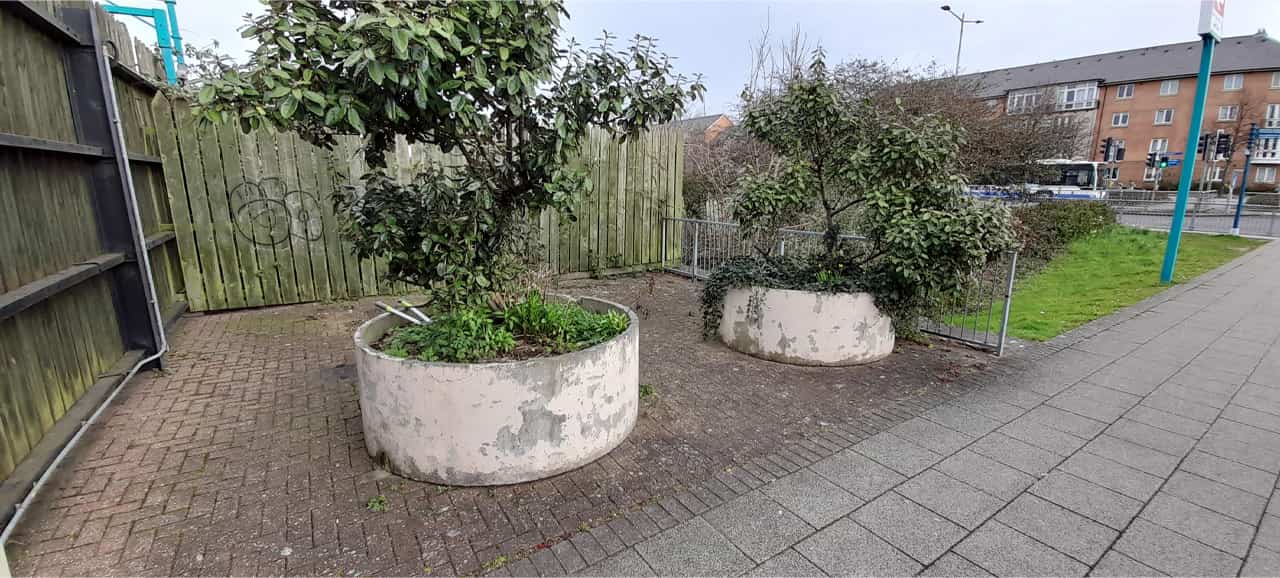
After
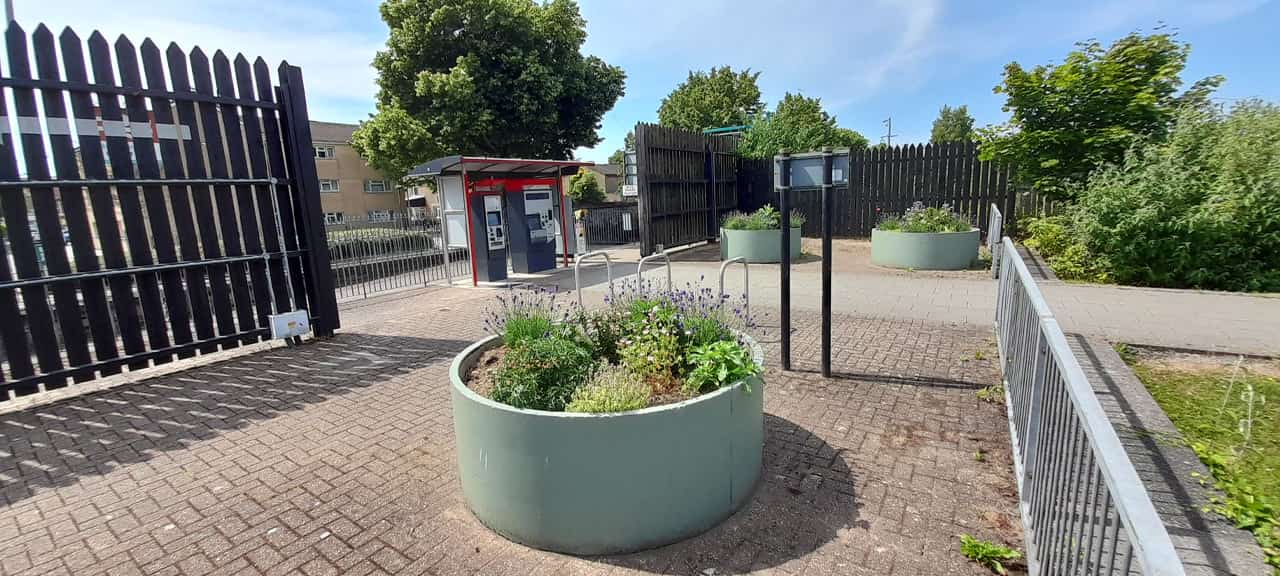
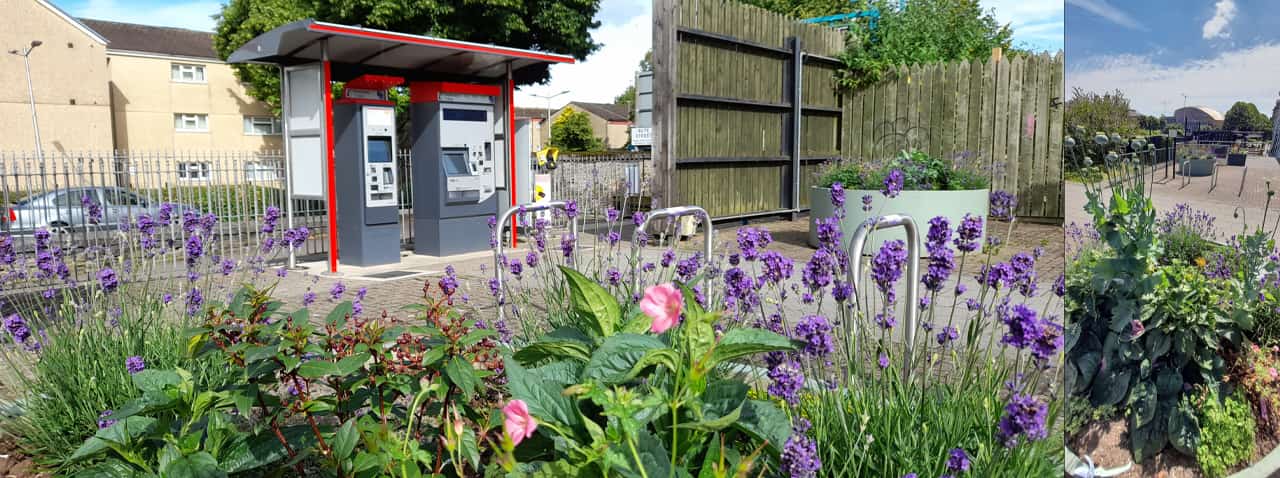
Cwmbran railway station
- Three new hanging baskets have been placed at the station to improve its appearance for rail users and the local community.
- We’re building planters and adding hanging baskets with native plants and flowers using sustainable, peat-free soil. These will be looked after by station staff.
- We’re looking at proposals to use grasslands adjoining the station for flower beds.
After
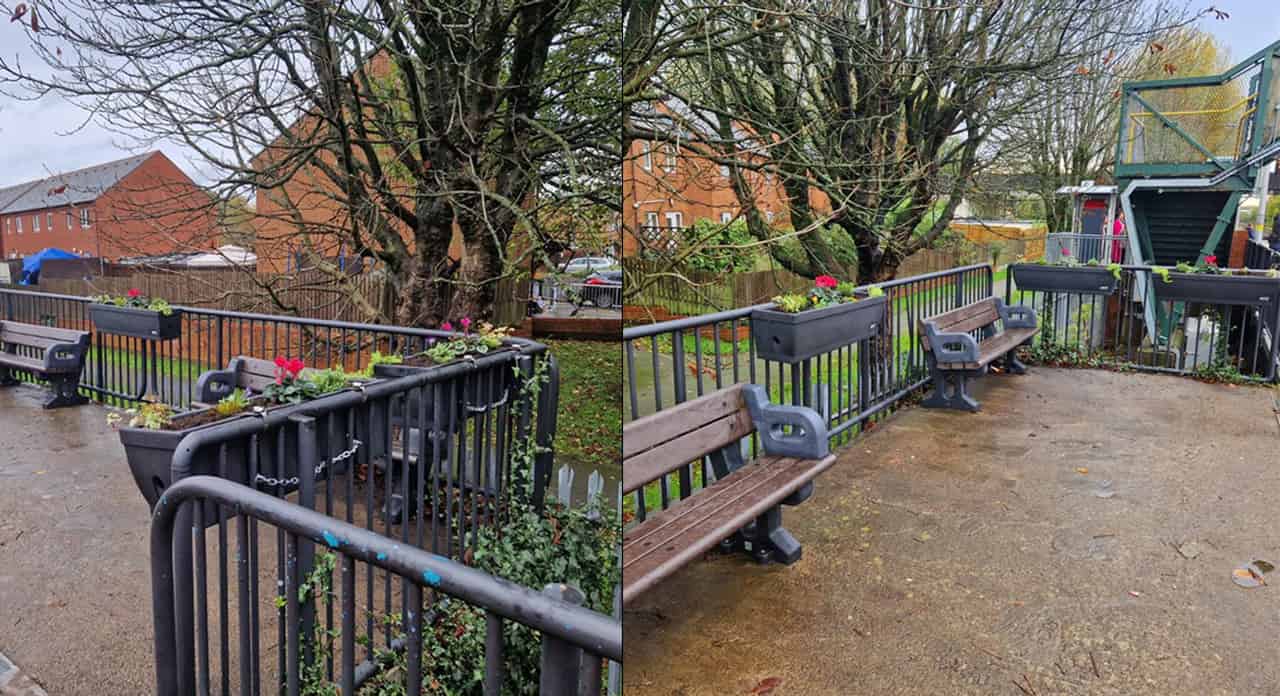
Llandrindod railway station
- Funding from the project has built four planters to create a green route around the station.
- This is supporting efforts to reduce anti-social behaviour at the station.
- The Heat of Wales Community Rail Partnership is working to recruit a station adopter
- We’re considering how we can use land adjoining the station to create new green spaces.
After
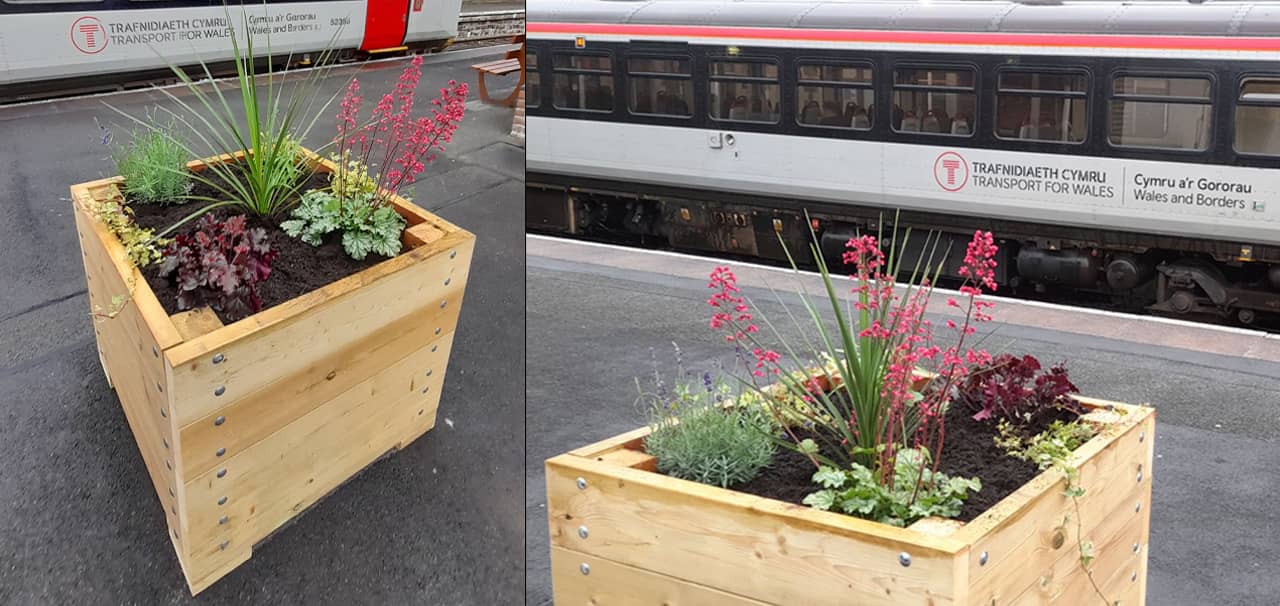
Llanwrytd railway station
- The station building is now run by Llanwrtyd Wells Community Transport (LWCT) who use it as a Community Centre and meeting space.
- Funding from the project has built six planters and wildlife boxes creating an enhanced green route around the station.
- We worked in partnership with Twynyrodyn Community Hub to recruit volunteers from the local community and arrange a planting day in the local eco-garden. This is looked after by a group of station adopters composed of local residents.
- As a rural station, green routes around Llanwrytd are ideal for supporting biodiversity.
After
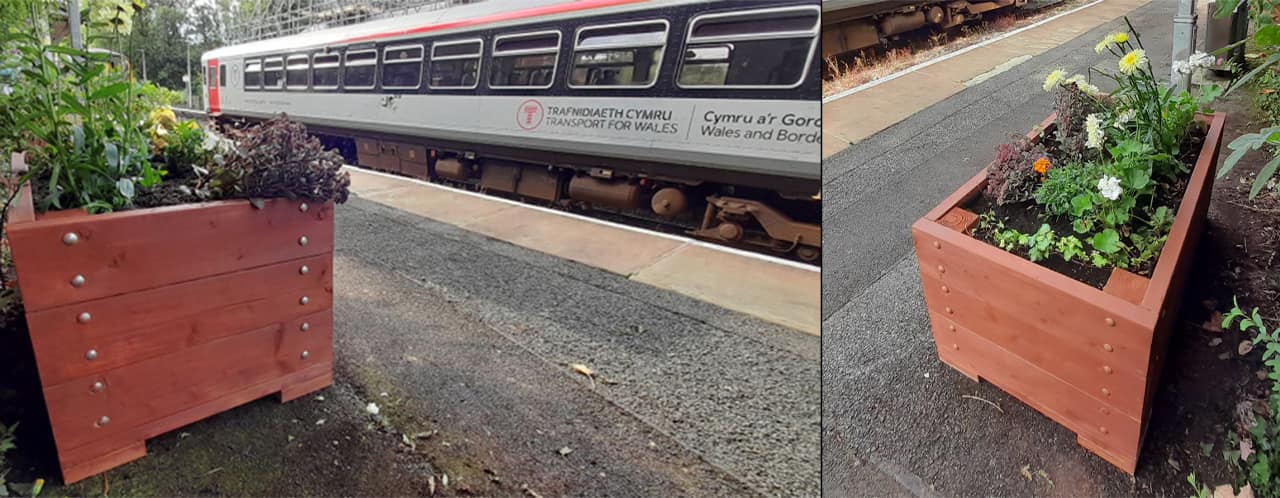
Pontypridd railway station
- Funding from the Project has allowed us to build three new planters near the station entrance and re-plant existing ones, including heritage planters donated by Pontypridd Museum.
- We’ve used native plants and flowers using sustainable peat-free soil to support local biodiversity.
- We’re looking at other steps we can take to improve the appearance of the station with new and improved green spaces for rail users and the local community to enjoy.
After
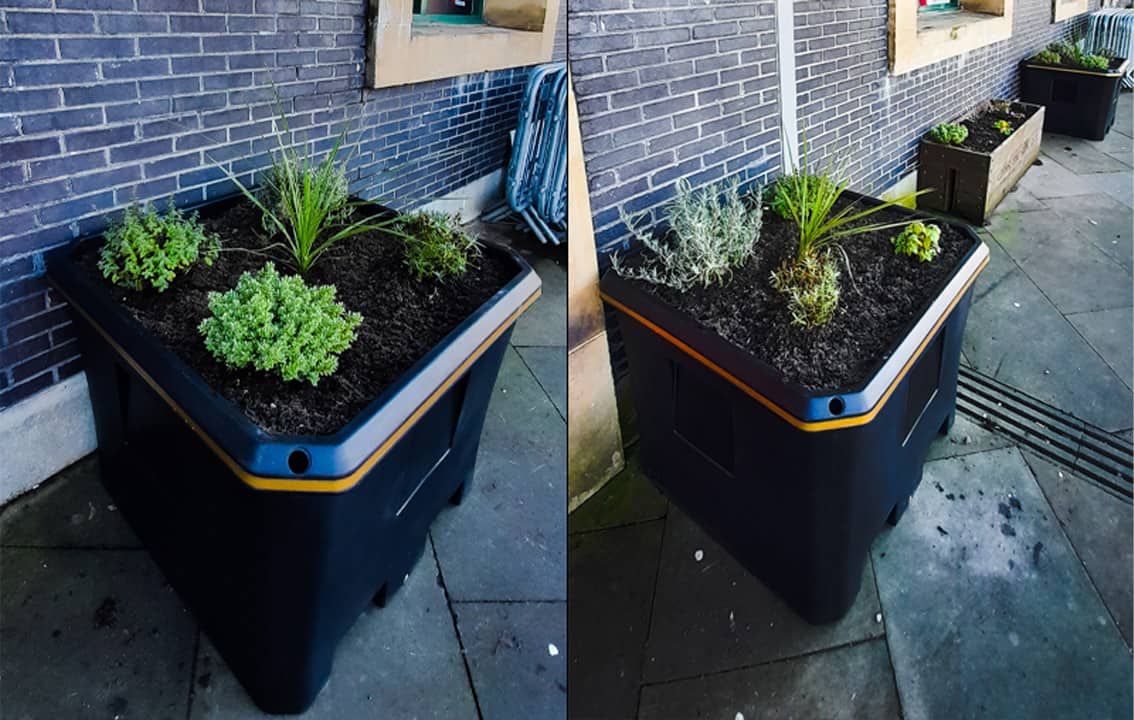
Treherbert railway station
- We’ve added fence baskets to the station entrance to improve its appearance for rail users.
- We’ve used native plants and flowers using sustainable, peat-free soil to support local biodiversity and encourage native species to return to the area.
- We’re improving the station’s vegetation and adding shelters for local wildlife.
After
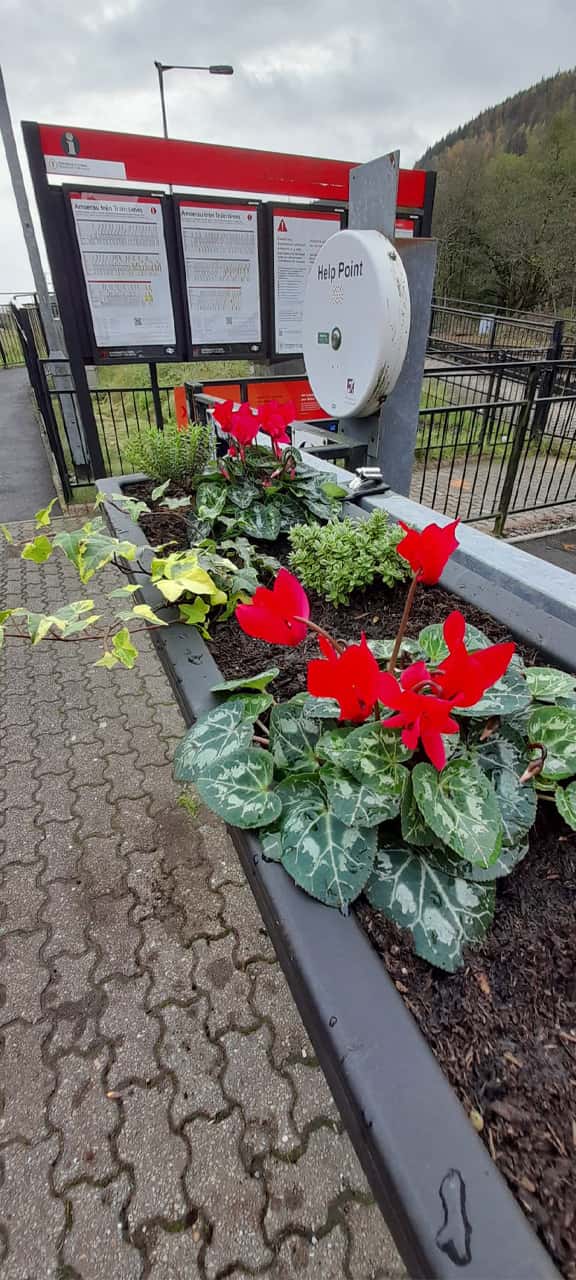
West Wales stations
Ammanford railway station
- Ammanford is one of the first stations to have opened in Wales, back in 1841.
- Funding from the project has been used to build planters for the station, creating a green route along the platform.
- The station and planters have been adopted by Ammanford Lion’s Club, a local charity and service organisation supporting local communities.
Before
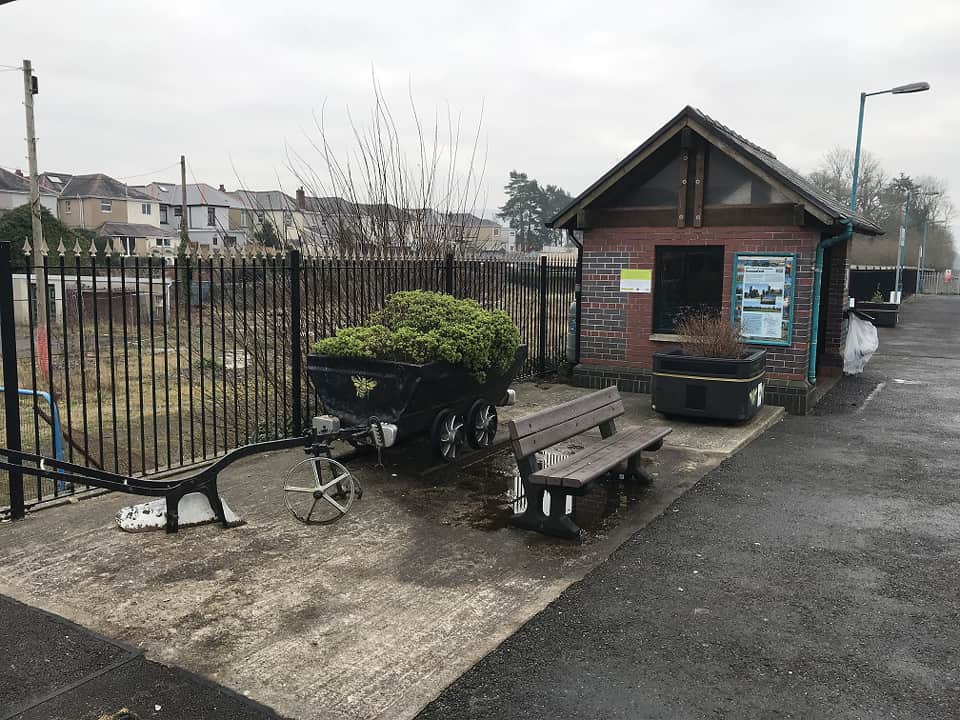
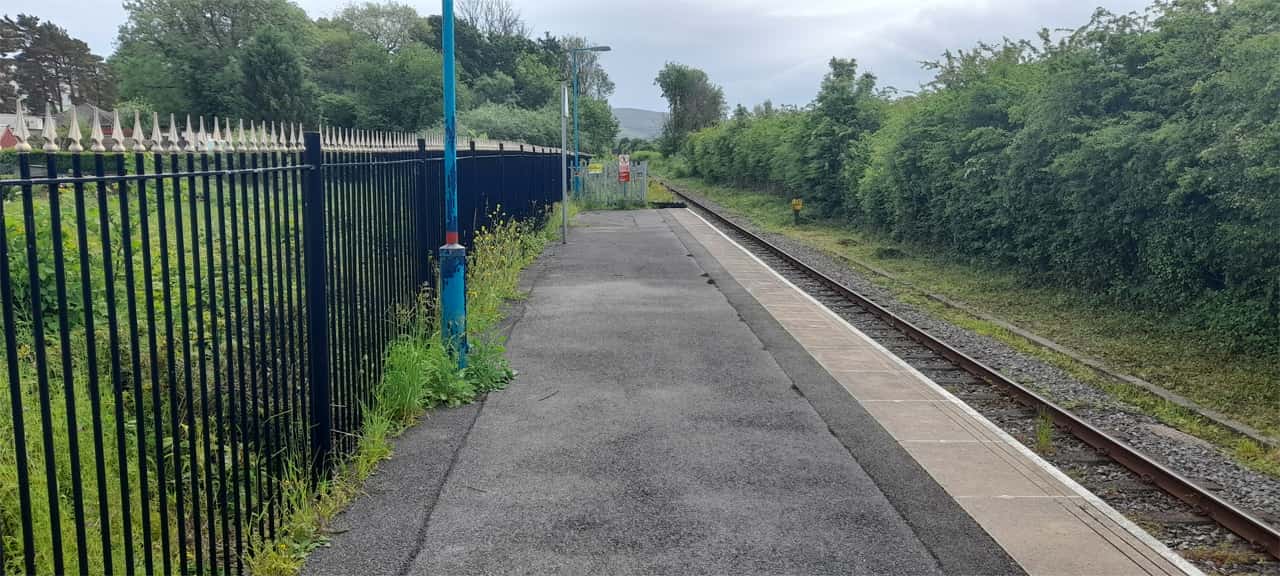
After
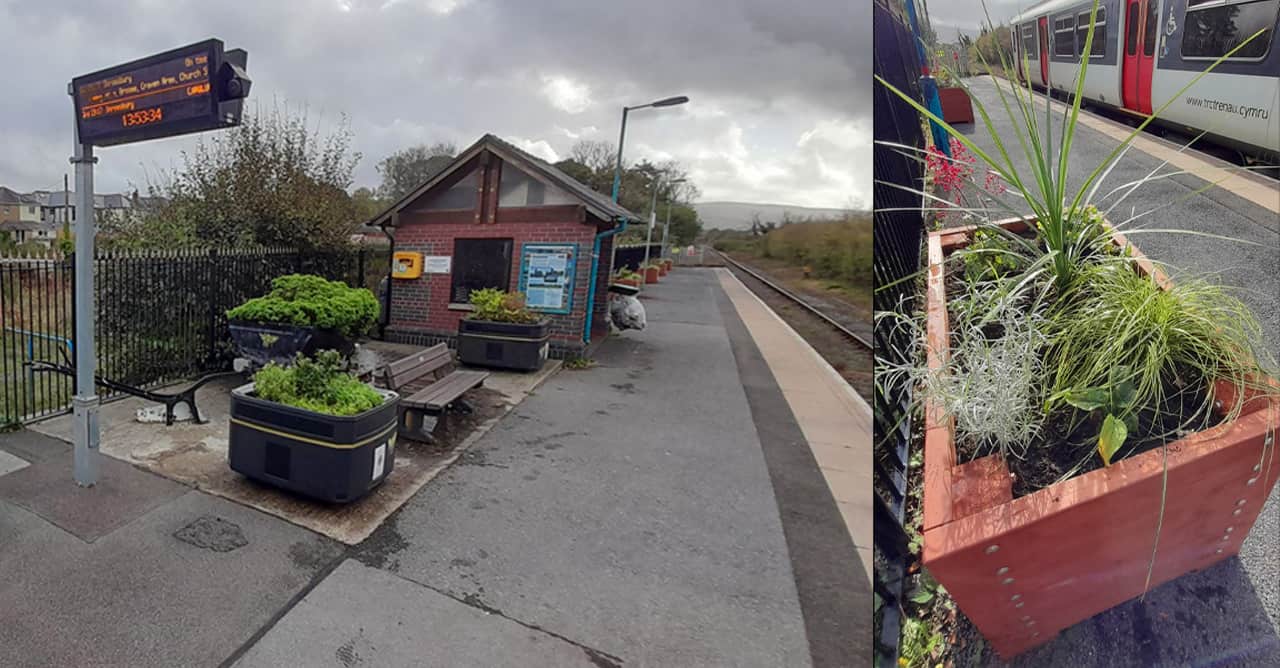
Bridgend railway station
- Bridgend is the fifth busiest station in Wales.
- Funding from the project has built more planters for the station to create a green route along the platform.
- It’s using sustainable, peat-free soil to support local biodiversity.
- Adopters are being recruited for the station.
Before
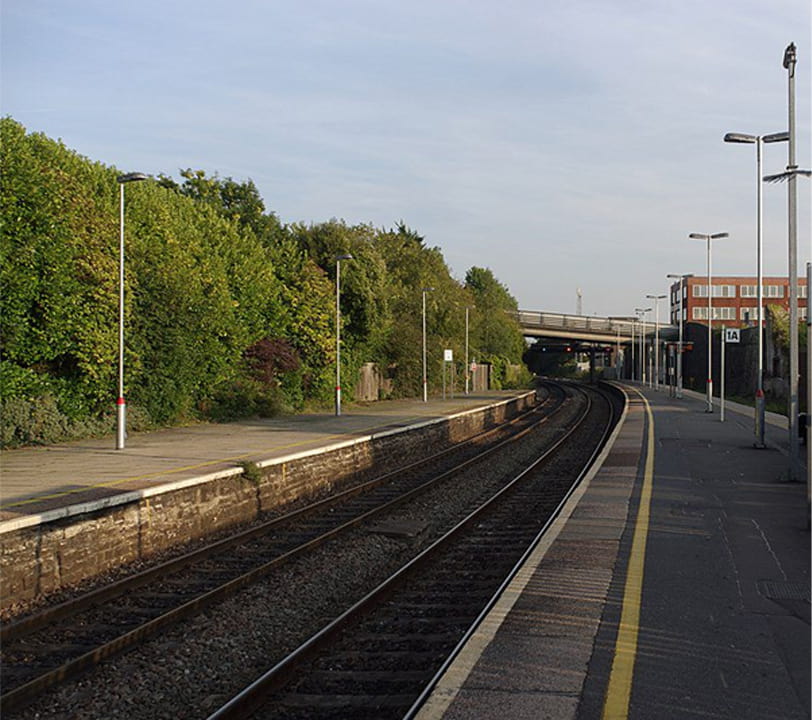
After
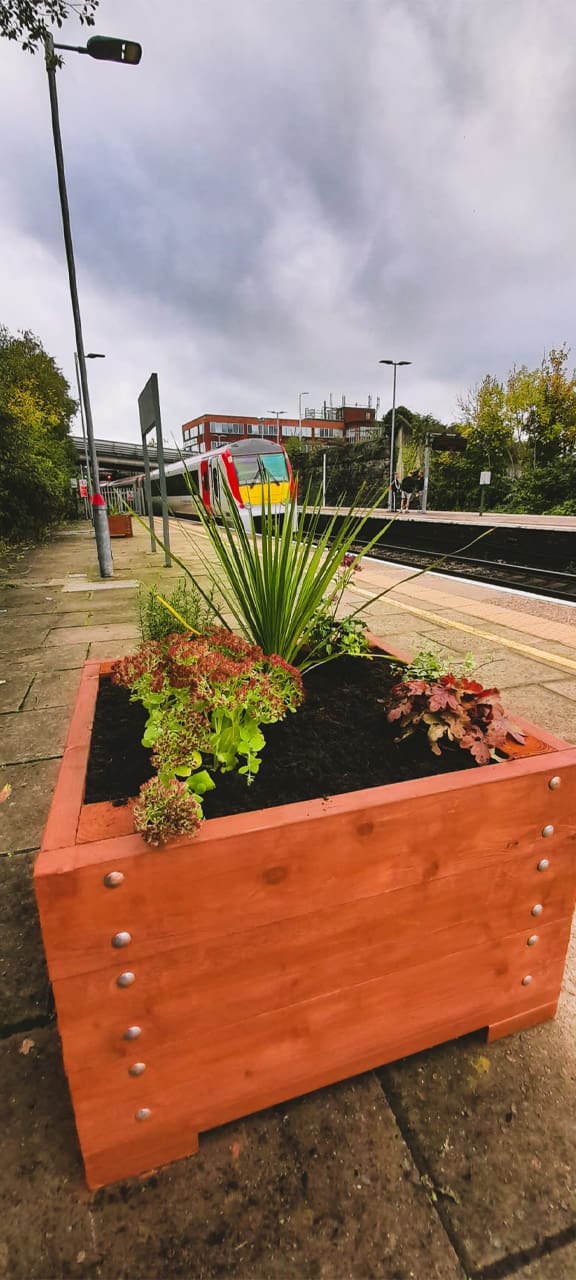
Ferryside railway station
- Opened back in 1852, Ferryside is one of the oldest stations in Wales.
- Funding from the project has built six planters with native, pollinator-friendly plants to create a green route around the station.
- The planters are looked after by a local resident with a ‘Friends Of’ adopter group recently established with the support of the town council.
After
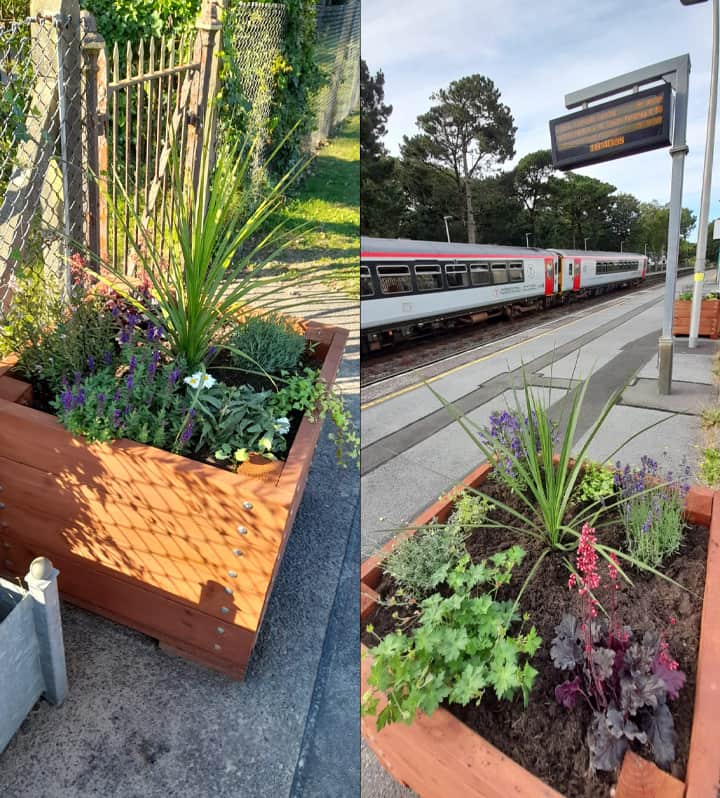
Haverfordwest railway station
- Opened in 1854, the station building has undergone several updates, resulting in it winning a series of notable awards, including the Anglo-Irish Best Station for two years running in 1991 and 1992.
- Funding from the project built four pollinator-friendly planters at the stations which have been adopted by members of the Haverfordwest Youth Forum.
- The planters have created a new green route along the platform.
Before
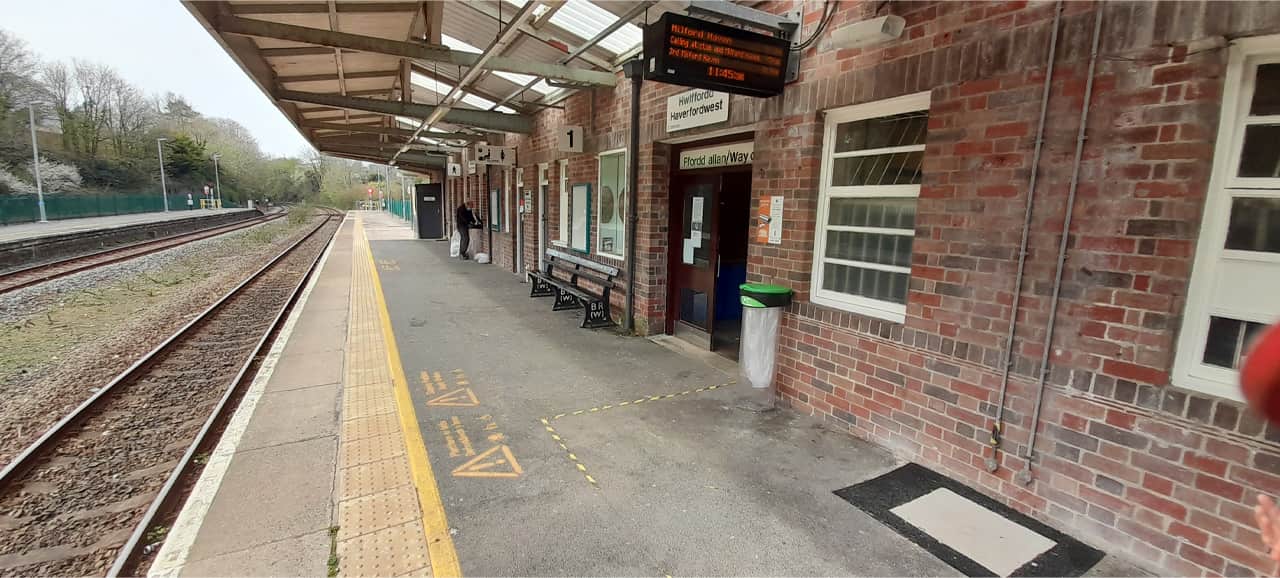
After
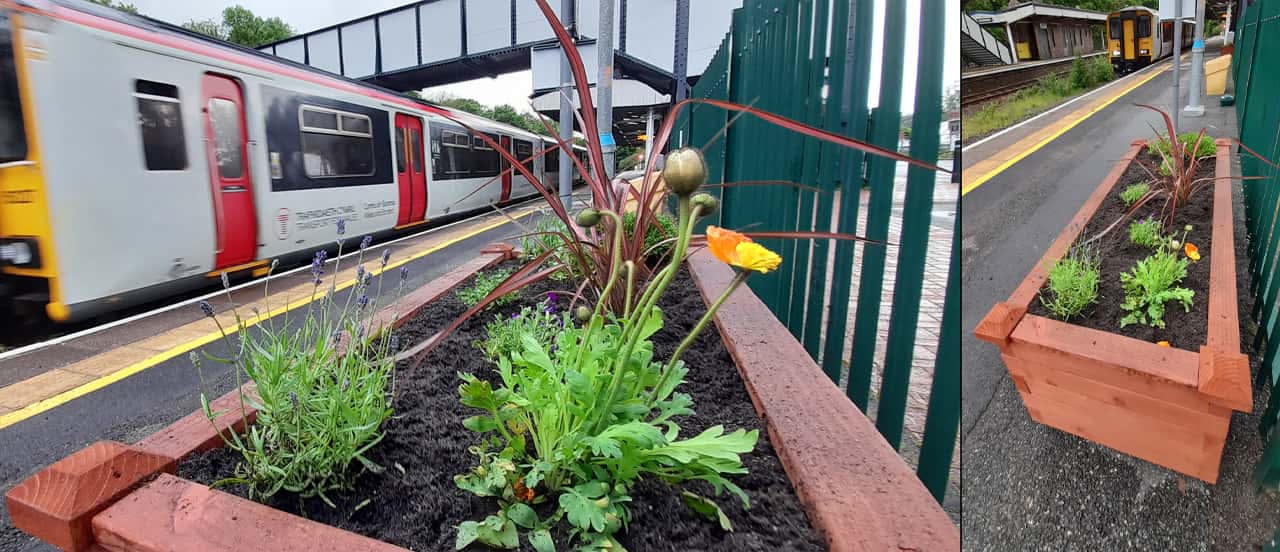
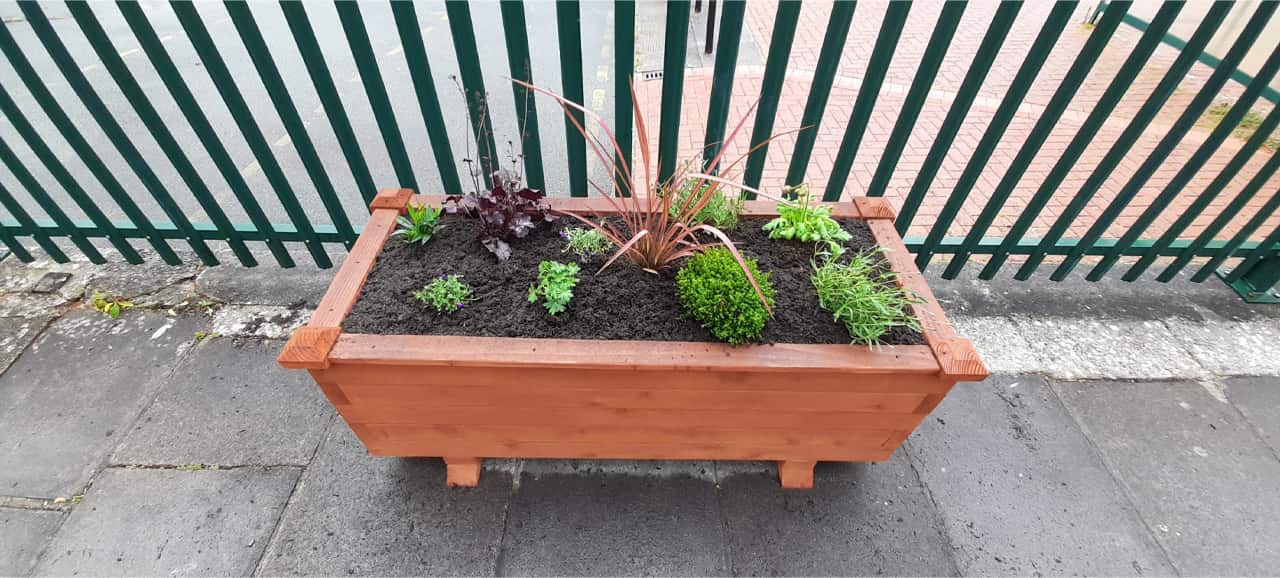
Kidwelly railway station
- Kidwelly is the largest station being transformed by the Green Routes project.
- Sleeper gardens have been created and installed with support from Centregreat.
- The gardens will be looked after by the Kidwelly Scout Group.
- The sleeper garden provides a significant green enhancement to the station and access to nature for passengers, the local community and for the young people involved in the Scout Group.
After
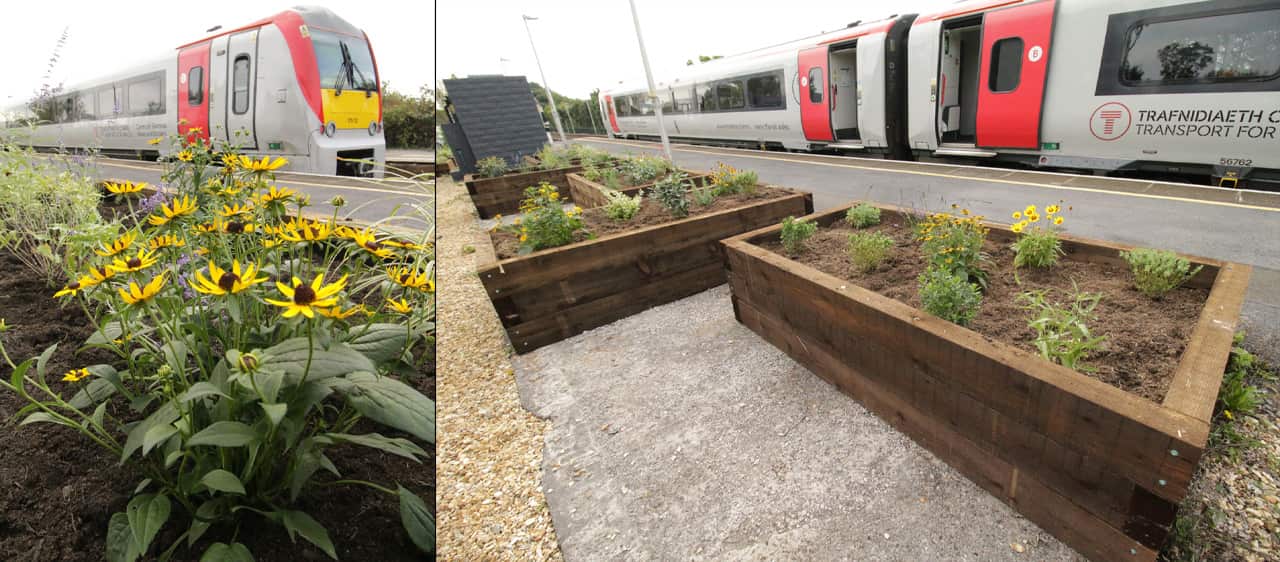
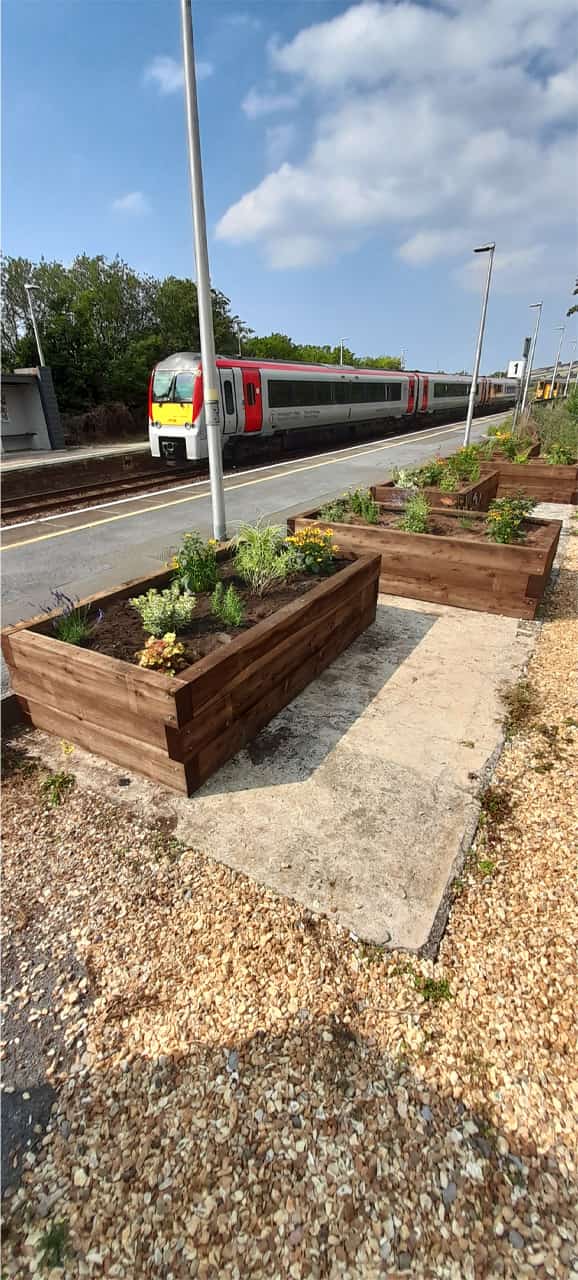
Llandovery railway station
- The refurbished station buildings were opened by Prince Charles in June 2011, some 19 years after they were closed.
- The project funded six pollinator-friendly planters at the station to boost biodiversity at the station ahead of next year’s Eisteddfod, where thousands of passengers and visitors are expected.
- The Friends of Llandovery Station group are currently being formed with support from the Town Council and the Heart of Wales Community Rail Partnership.
After
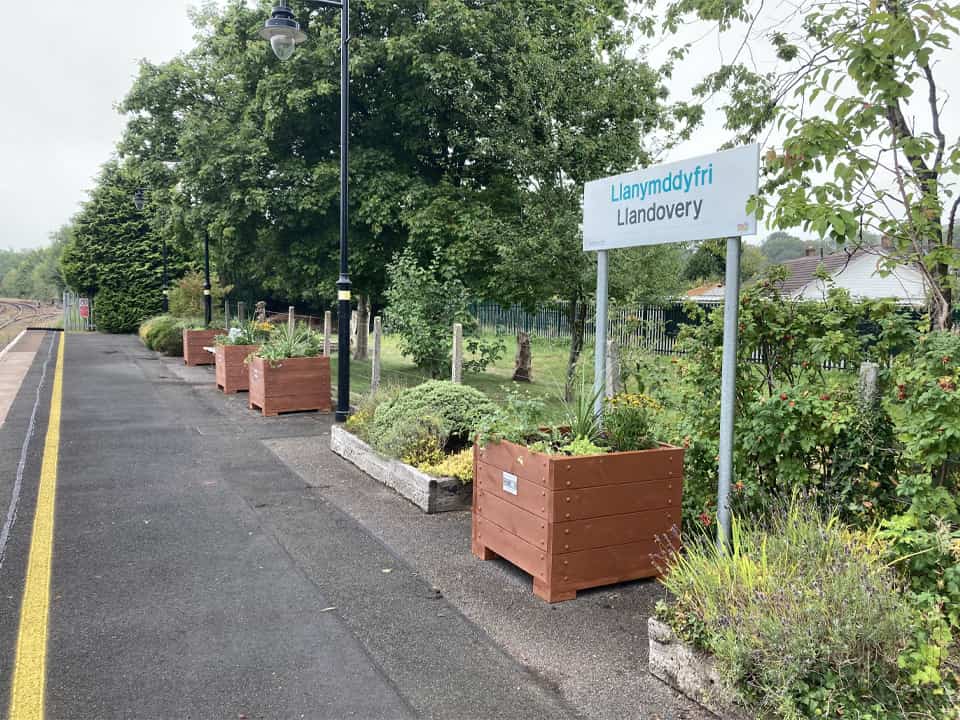
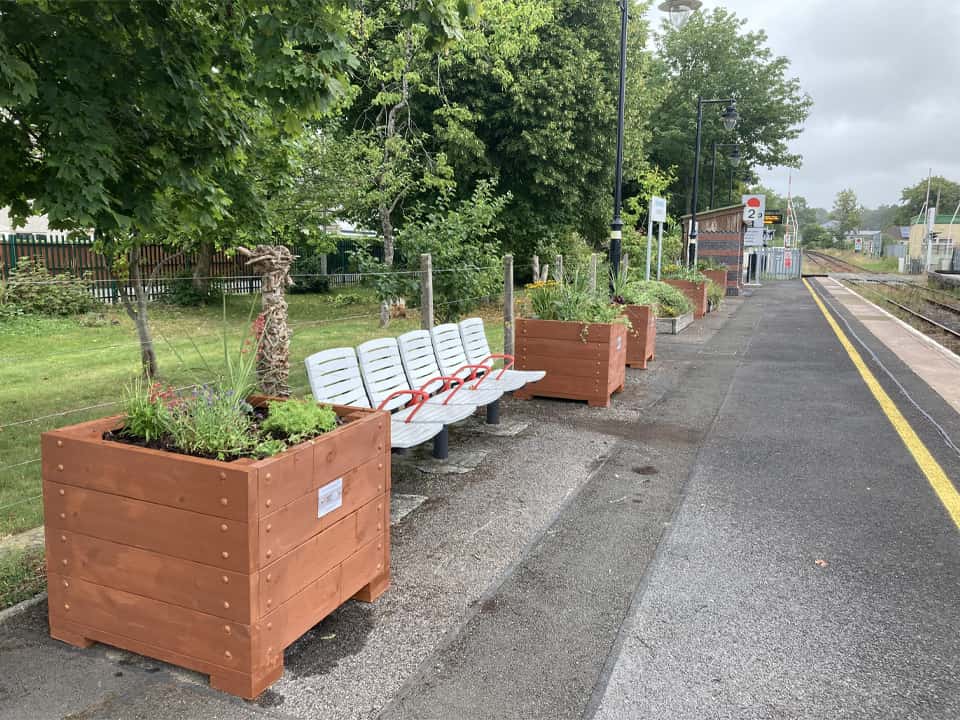
Milford Haven railway station
- Milford Haven is the western-most railway station in Wales.
- The project funded four pollinator-friendly planters at the station which have been adopted by members of Visit Milford Haven.
- The planters have created a green route along the platform, supporting local biodiversity.
Before
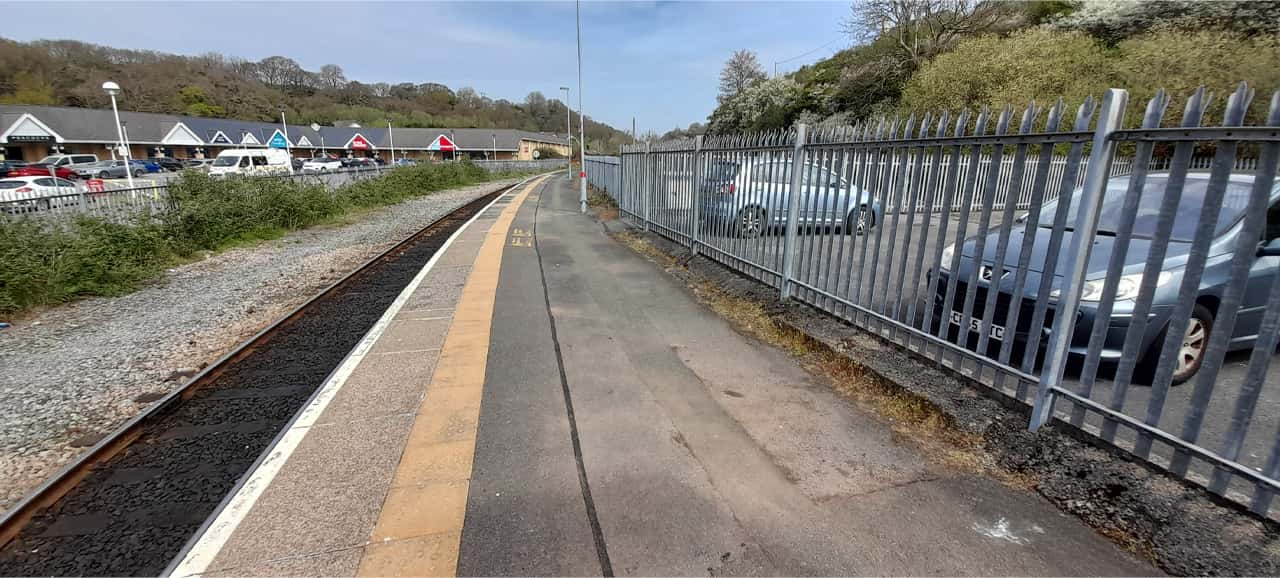
After
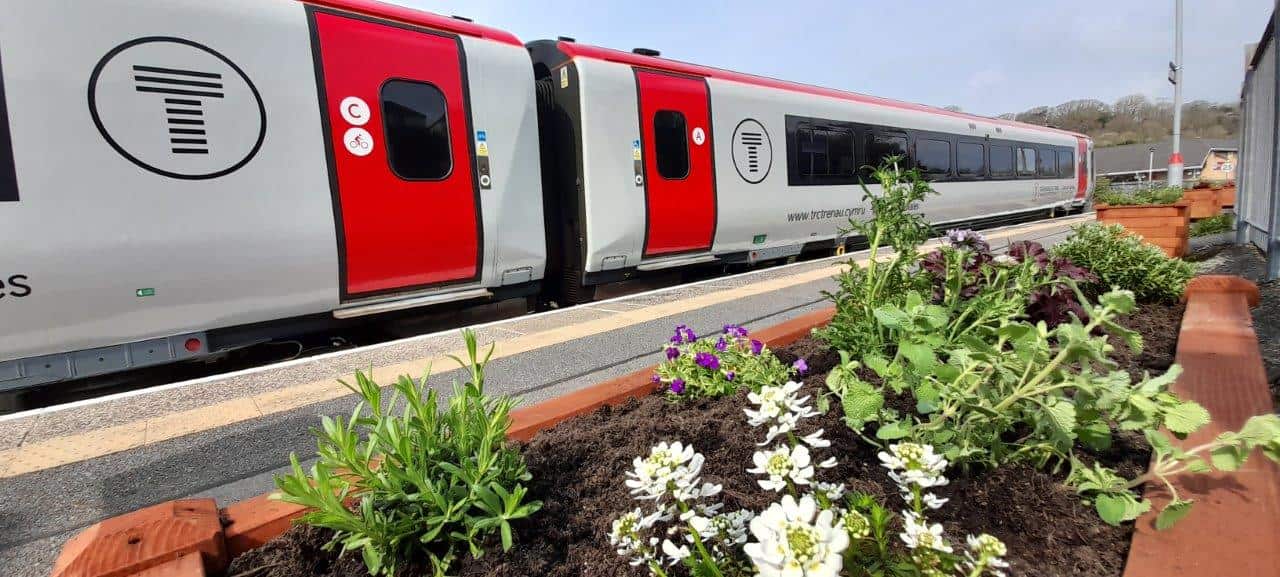
Pembroke Dock railway station
- Originally opened to serve the Royal Navy Dockyard in the town, the station building is Grade II listed.
- Funding from the project has been used to build planters and create a courtyard-style wellbeing area at the station for the benefit of the passengers and the local community.
- Existing planters have been moved further along the platform and the green area surrounding it has been tidied up.
- The planters are looked after by local residents.
Before
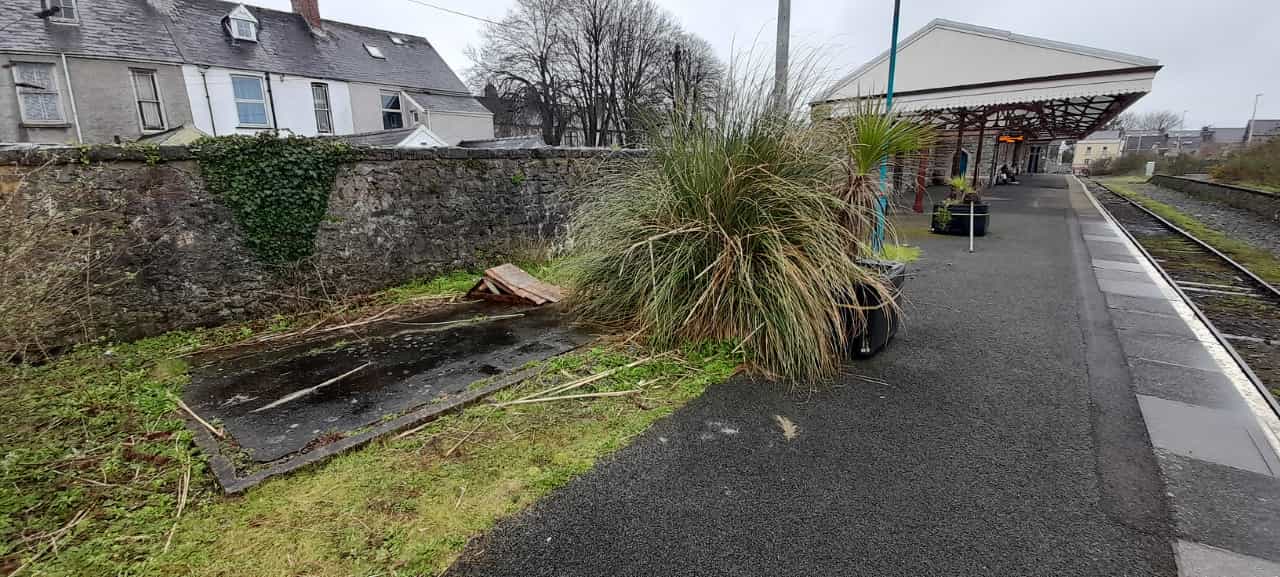
After
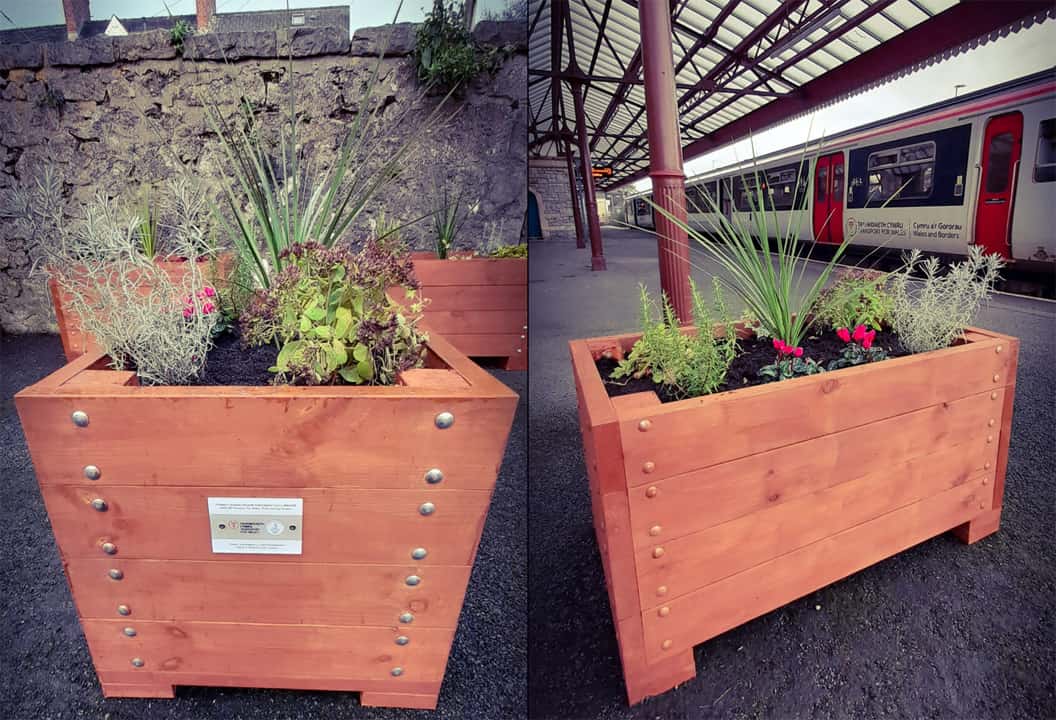
Pontarddulais railway station
- The station was built in 1840 on the original Llanelly Railway main line, from Llanelli to Llandovery. The 80-yard-long tunnel immediately south of the station is the oldest surviving rail tunnel still in use in Wales, having originally being built for horse tramway use around 1839.
- The project has funded ten wildlife boxes placed in the existing planted area.
- The green spaces are looked after by the station’s adopters – Pontarddulais U3A.
- As a quieter station, Pontarddulais is ideal for wildlife boxes as they are less likely to be disturbed.
Before
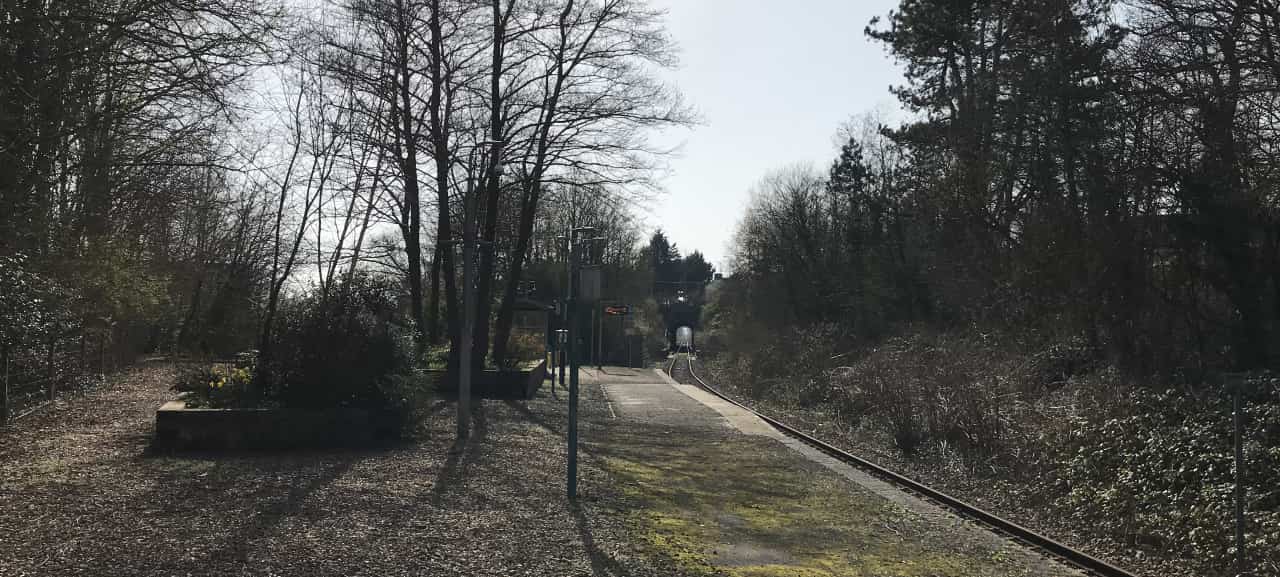
After
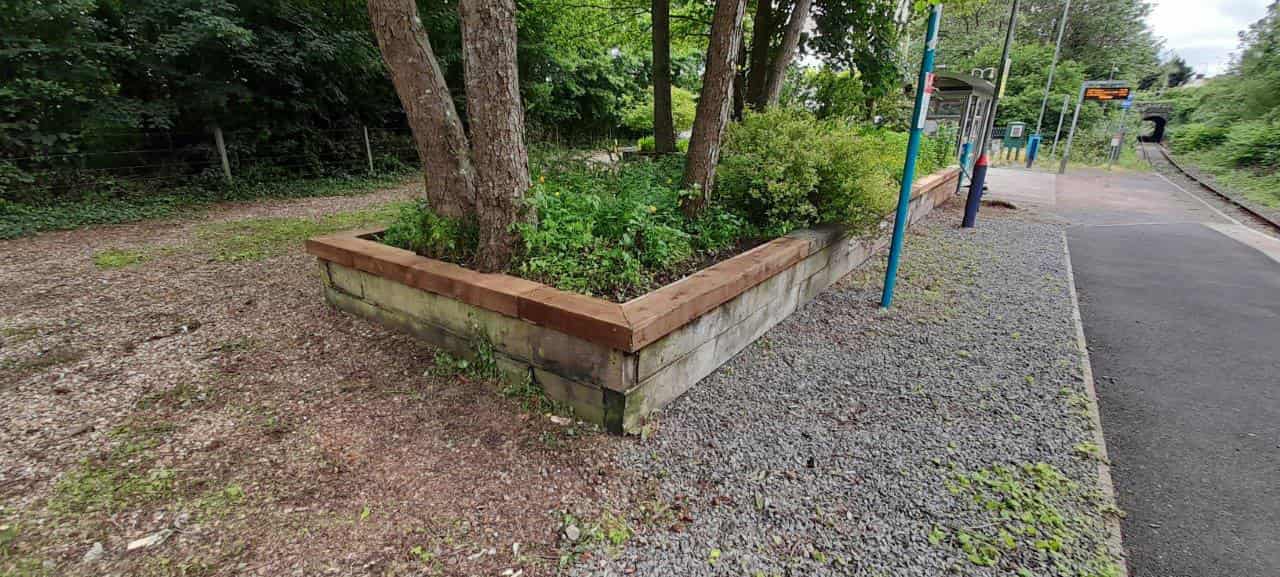
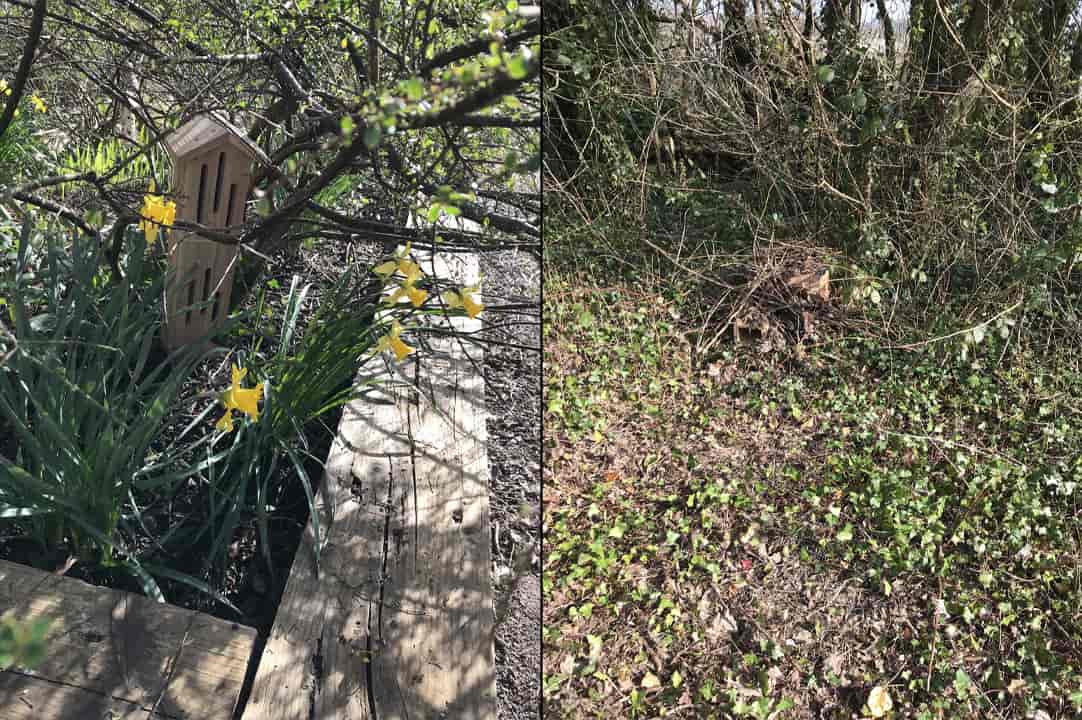
In our communities
BronFair Allotment Association
- We worked in partnership with BronFair Allotment Association to gather volunteers from the local community to build planters for local people, families and young children to use and enjoy safely.
- We’ve built an archway that collects rainwater for local growers to use. Local people will also be able to use this as a quiet reflection space to support their health and wellbeing.
- The Allotment Association is focusing on growing fruit and vegetables for the benefit of the local community, with allotment users and their families leading on this.
Cambrian Village Trust
- We’re working with the Cambrian Village Trust to make improvements at Cwm Clydach Countryside Park.
- The Trust was supported by the civil engineering and construction contractor, Alun Griffiths to re-design their outdoor spaces, with new groundwork laid and a shed being constructed.
- We’ve set up the ‘Stalk to Fork’ project in partnership with Alun Griffiths and the local community, helping support local food-growing and biodiversity at the lakeside centre.
- The Trust has been supporting educational efforts within the community to protect the local environment.
- Their efforts have included building ‘bug hotels’, bird houses, hedgehog houses and planters to support pollination, nature and biodiversity.
- Volunteers, schools and local people have been working together to grow fresh fruit and vegetables.
Enbarr Foundation
- We’re working with the Enbarr Foundation as part of our efforts to protect the unique biodiversity found around our railways.
- Together we’re creating more green spaces around railway infrastructure, creating wildflower gardens and nurturing native plants and wildlife to support nature and cross pollination in our towns and cities.
- We’ve re-introduced native plants, helping local ecosystems to thrive.
- We’ve created a memorial garden to allow our communities to reflect and show their appreciation for our armed forces and their families.
- Enbarr has also run a workshop on grassland management and plant history to raise awareness of the importance of local biodiversity and nature.
Taff’s Well
- We’re working with civil engineering and construction contractor, Alun Griffiths and members of the local community to help protect the local environment at Taff’s Well village hall, close to the local railway station.
- We’ve built planters, hanging baskets, wildlife boxes, and even a small garden for the community to use and enjoy.
- We’ve planted a herb-garden with ‘green walls’ around the Village Hall for the benefit of the community.
- The site has seen an increase in visits by different species of birds as well as more bees, butterflies and other insects.
Twyn Community Hub
- We’re working with Twyn Community Hub to build a sensory garden for the community to enjoy.
- We’re supporting local biodiversity by looking after green spaces, planting flowers and plants to support wildlife and insects.
- The funding will also help support wildlife habitats, use of good-quality soil and larger, easier-to-hold planting tools for our volunteers with protected characteristics.
- People of all ages and backgrounds will benefit from this inclusive project and we’re taking steps to make maximise participation.
- We hope people will enjoy the new space and work with our volunteers to help look after it. Local community groups will also be able to use it for education and volunteering opportunities.
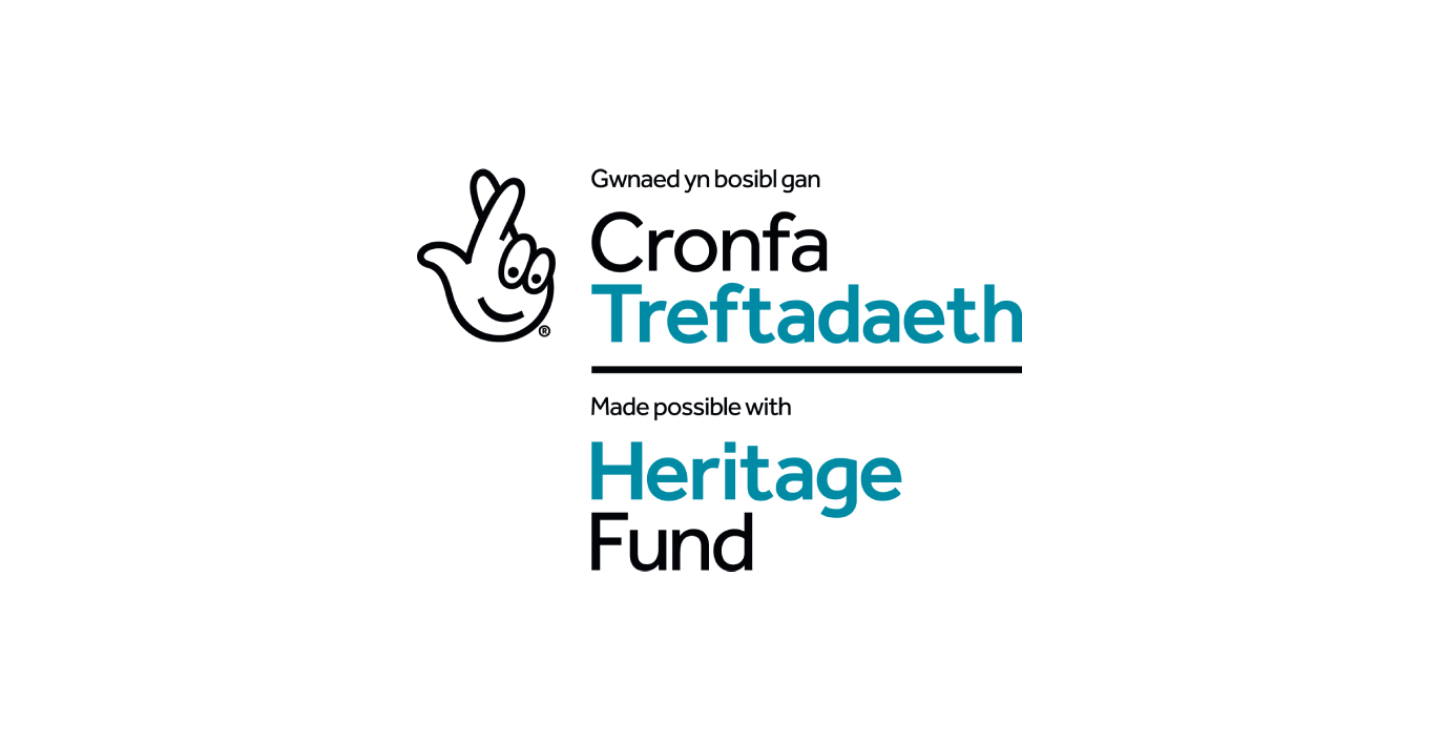
Made possible with Heritage Fun
TfW has received a £100,000 Local Places for Nature grant from the Welsh Government and The Heritage Fund for the project.



